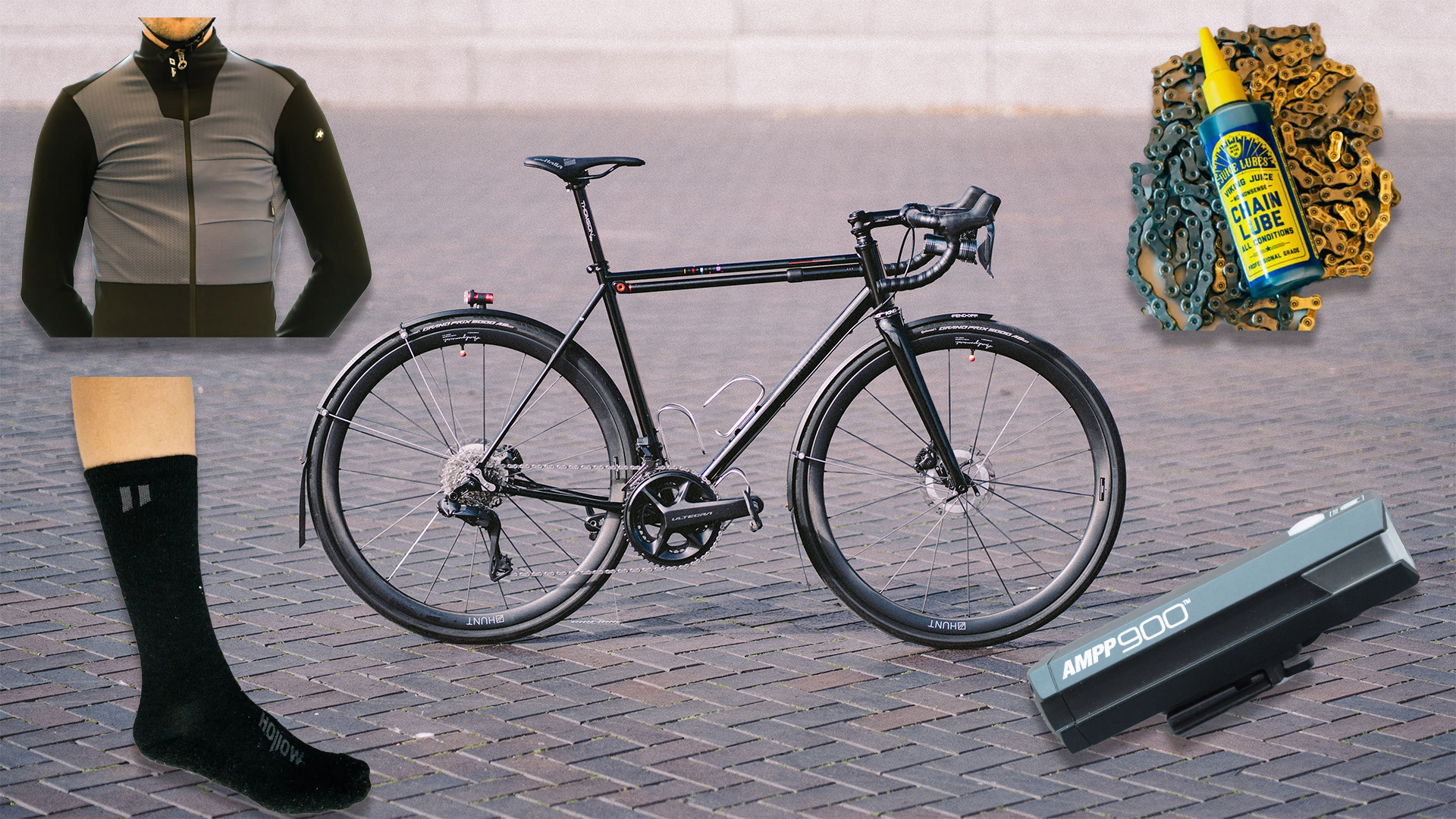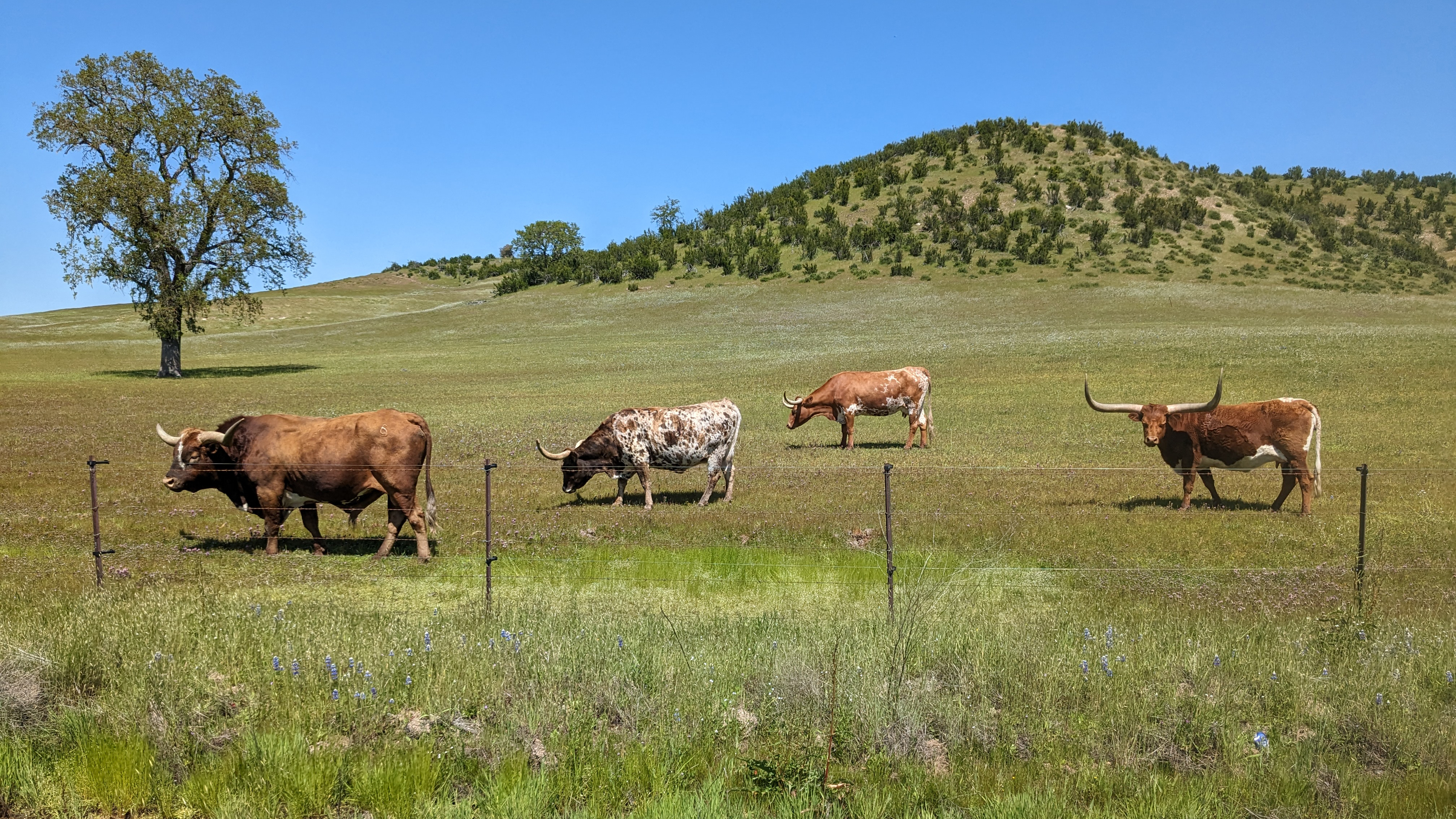
I imagine that I’m similar to most of the people reading this. If I asked you what is the worst thing you can picture happening when travelling with a bike, I suspect a lot of people would mention a broken frame. That was certainly what I thought would be the worst thing that could happen. In hindsight though, having had it happen, it turns out that there are ways to get through whatever challenges come up. I relied on the kindness of strangers and colleagues alike and still managed to have a pretty amazing adventure.
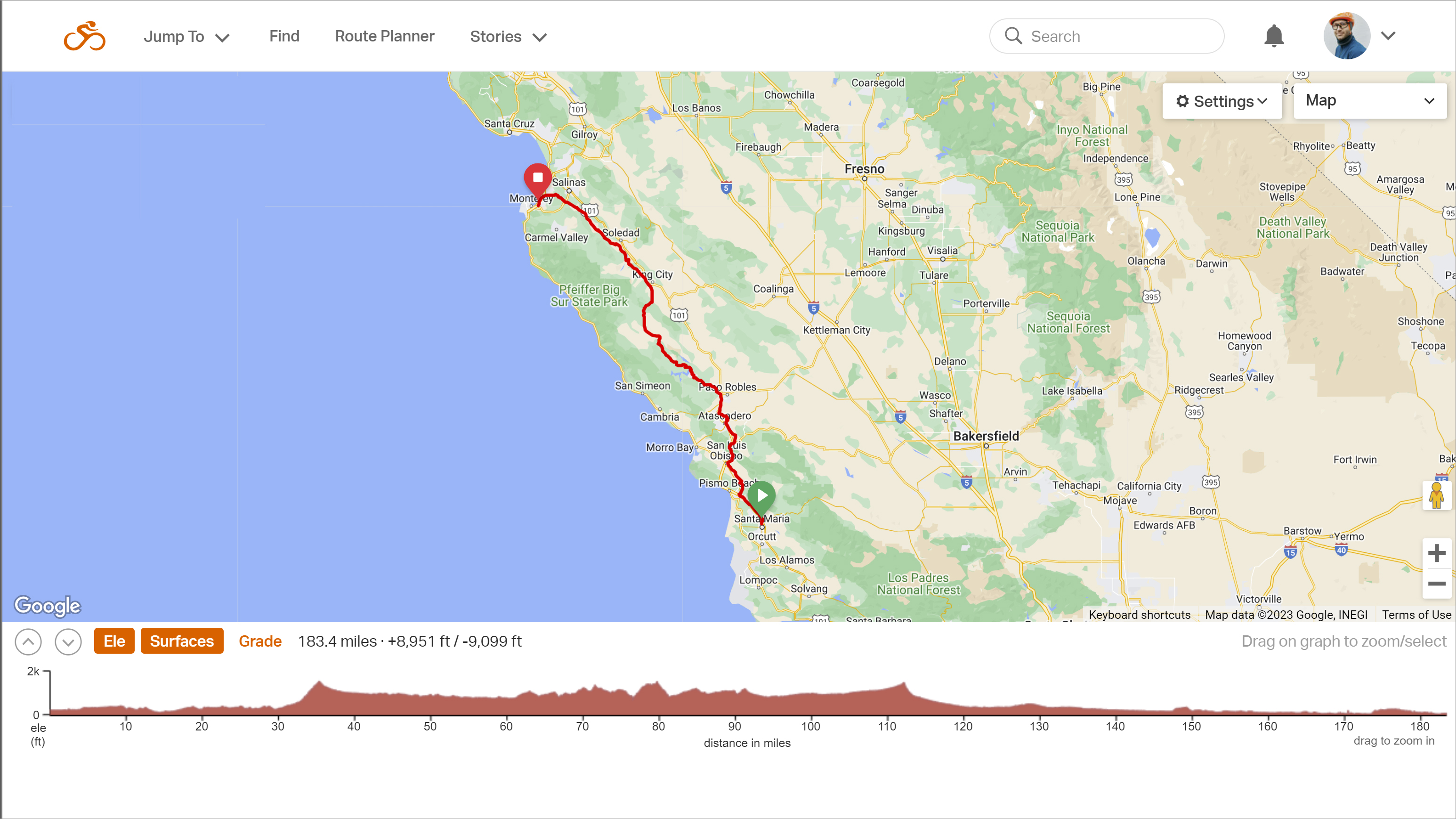
Start with a plan, then change it
This story begins, as all adventures do, with a simple plan. For years I've been working on a review of the FSA K-Force WE groupset and this year a new 12-speed version hit the market. As the release timing started to look like it might align with the Sea Otter Classic, I saw an opportunity.
With Sea Otter pulling people to drive to the Monterey area of California, I knew I could find someone to take my gear with them. I wanted to test the groupset in a way that no one else would and this gave me the chance. I was going to ride from Los Angeles to Monterey to test the groupset while also taking in the beauty of the California coastline.
The only catch? I don't have time to spend slowly making my way up the coast of California and enjoying the scenery. I needed to do it in as few days as possible. After a bit of investigation, it looked like all I needed to pull it off was two days, early in the season, covering roughly 282 km / 175 miles each day. No problem, right?
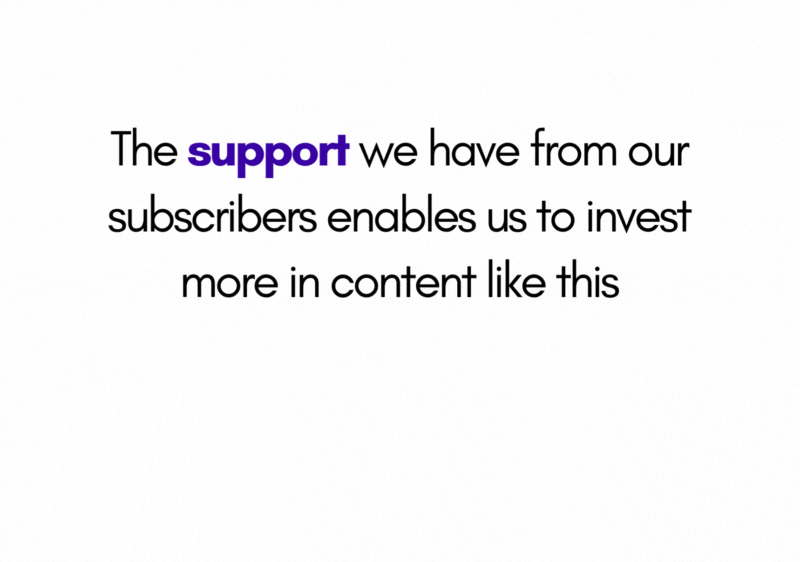
I heard warnings about trade winds in California but I ignored that and got to work planning. The first thing I needed to do was work out the route. This wasn't an organised event so no one was going to figure out a route for me and I started with an old Ted King video. He rode South through California once and I knew whatever route he used must have worked well enough. I found it on Strava and, while it was only a rough start for my ride, it was a start.
The first thing I did was pull the route into Ride With GPS. Once there, I changed the start point to my hotel in Burbank and started examining the rest of the route. I noticed that King had taken some dirt roads here and there, because of the RWGPS road surface details, so I looked for other options for those right away. I also needed to change the route through Los Angeles so I could stay off the Pacific Coast Highway, which, while pretty, is also a highway filled with hostile drivers. Instead, I opted to stay inland where there is a lot of bike infrastructure, plus some amazing climbing in the Chatsworth hills. I routed through the San Fernando Valley and Simi Valley before making my way to Santa Barbara and on to Santa Maria to sleep. The planned second day initially headed back to Big Sur then up the coast to Monterey. However, this was unfortunately the first mistake I made.
The West Coast of the US has had a rough winter. At some point a day or two before I left, I realised someone had mentioned to me that Big Sur wasn't open. Instead of taking in the beauty of the coast, I had to reroute through the centre of California following the 101 instead of Highway 1. Luckily I remembered and made the change because, if not, it would have been a soul-crushing error requiring significantly more miles as I backtracked. If anyone is riding through California in 2023, my route will get you around the road closures.
The latest race content, interviews, features, reviews and expert buying guides, direct to your inbox!
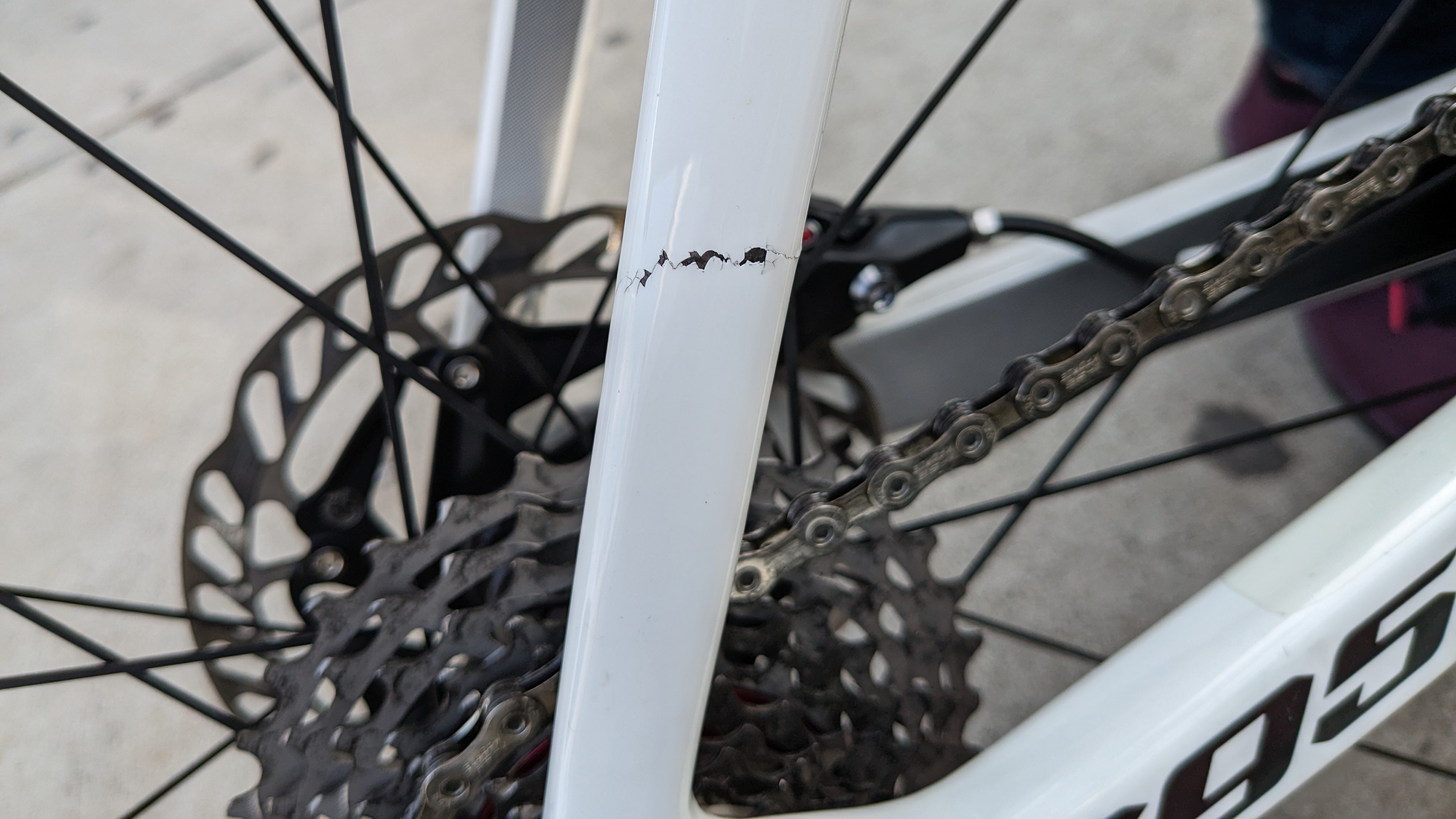
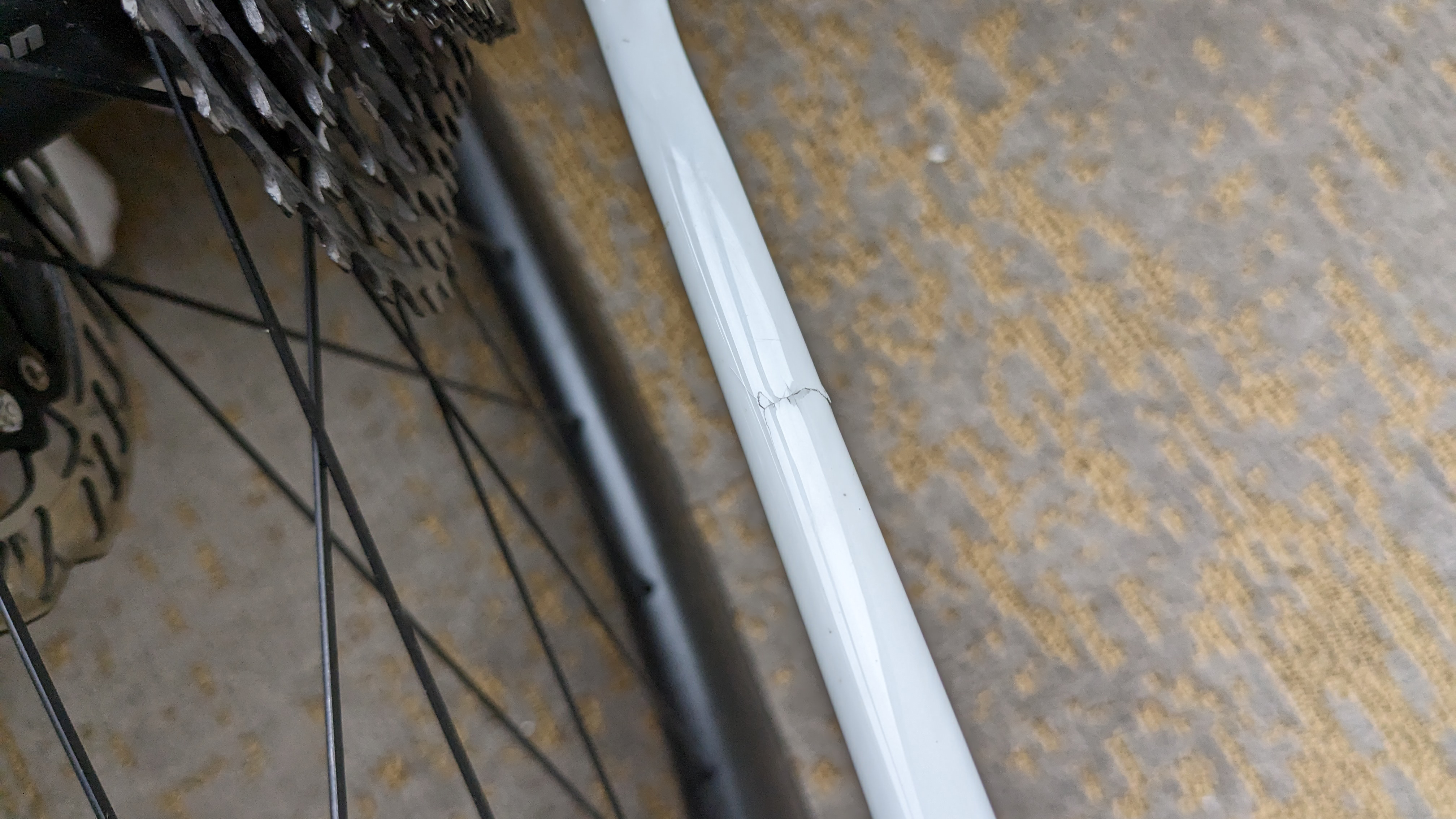
The broken frame
It's unsettling to change a route just before a big ride but that's nothing compared to what happened next. On Sunday night I loaded my Look 795 Blade RS into a Scicon Aerocomfort Road 3.0 bike bag. I chose this bag because as much as I prefer a hard case, I needed to hand off everything to a friend and a hard case was going to take up too much space. I've tested it, successfully might I add, on numerous occasions, and it's one of the most common bags you see used but I'm sure you can see where this is going.
When I got off my Alaska Airlines flight in Burbank on Monday morning, I checked my bike and discovered a big crack in the seatstay. The first thing I did was get in touch with Ruckus Composites back home in Portland. Ruckus is one of the best-known carbon repair companies in the US and they confirmed within a few minutes that I had more than a scratch. The bike was unrideable. From there I reported the incident to Alaska, it takes 4-6 weeks for anything to happen so that's still pending, then got to work on a plan.
This is the point in the cycling video where there's tension building. If I had a film crew with me there would have been a lot of worried faces, hair-pulling and phone calls. Instead, it was just me in a hotel room. I posted a picture to my Instagram and went down to the bar to have a beer and think.
Who do I know in Los Angeles? Ritte calls Los Angeles home and has a new frame, could I borrow one and get it built with the FSA groupset fast enough? The answer was that it didn't matter because there were none of the new frames in my size. Ritte did have a suggestion though, which turned out to be the same suggestion that came from an LA-based bike friend. Two recommendations pointed me to Montenegro manufacturing owner Hernan, who repairs carbon and makes bikes in East LA.
With a plan in place, I walked my bike to the car rental and for the first time in a long time, my faith in humanity got a big upgrade. I explained why I wasn't having the best day and why I had to rent a car without a reservation. The woman helping me said she wasn't much of a cyclist but her father was and she knew how much he loved his bikes. She assured me she would take care of me, then proceeded to upgrade my reservation to a brand new car that fit my bike perfectly.
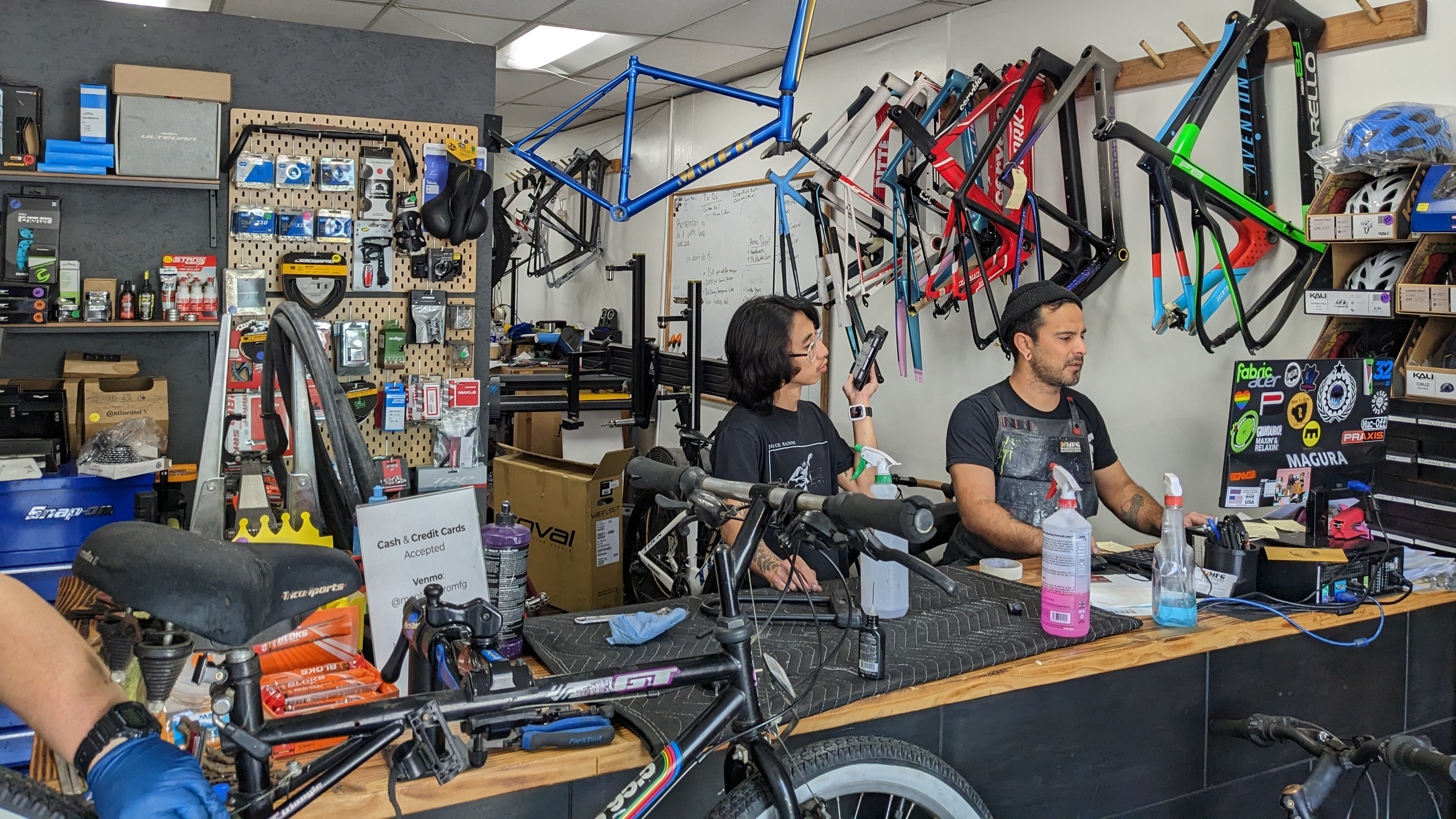
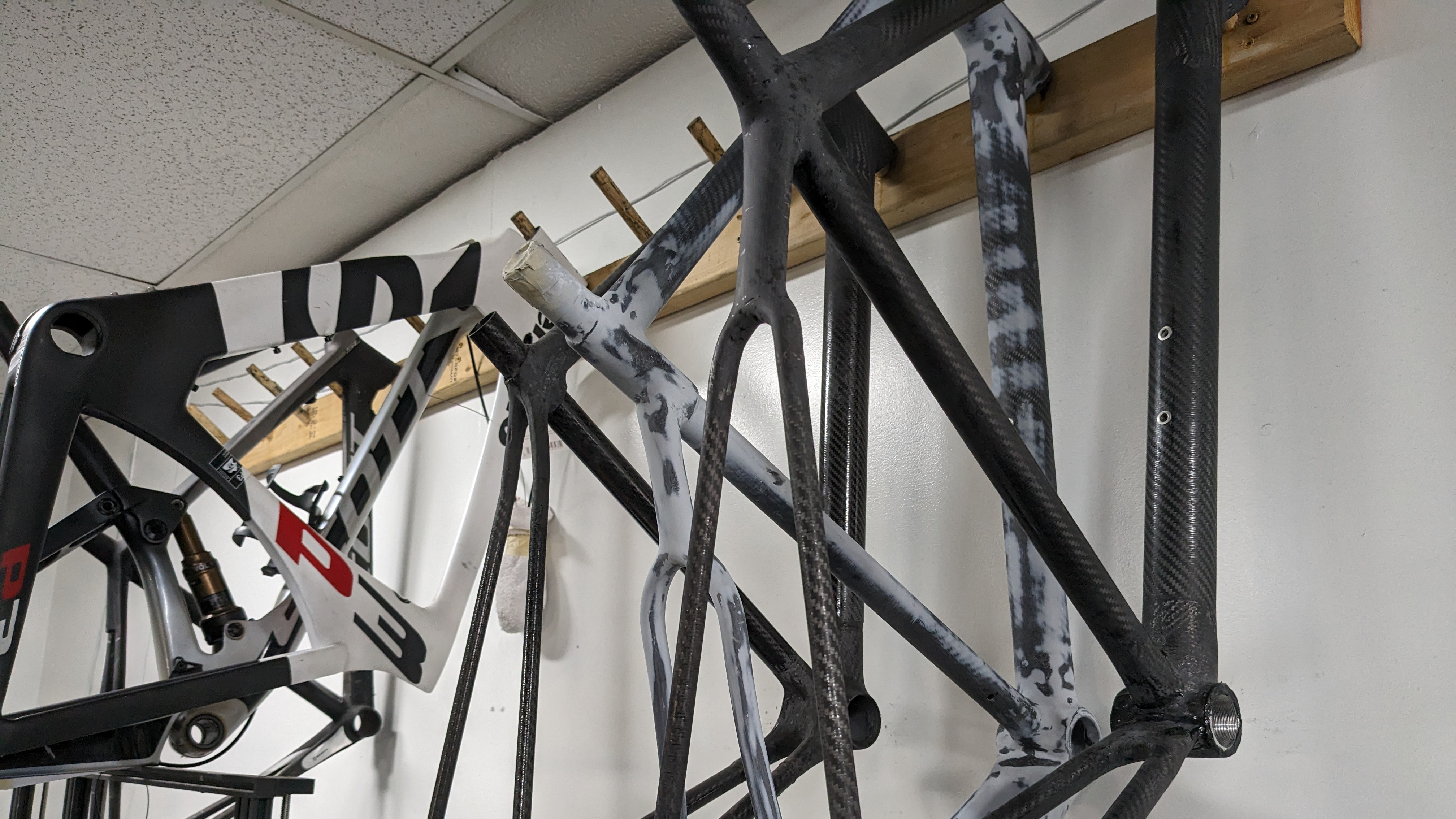
Then, after a drive through LA traffic, I walked into a tiny shop in East Los Angeles. Like many small shops, there was no room and lots of seven- and eight-speed bikes getting small adjustments. Hernan walked me into the middle room and there was more room plus a few high-end carbon bikes in various states of repair. The last room, at the back of the store, was a paint booth and after the short tour, Hernan said he could help me. He said he'd had two calls about me that day and that he could have the bike repaired by tomorrow. Once again I was feeling the love of the bike community.
Less than 24 hours after drop off, I came back and picked up a bike that looked like nothing had ever happened. The work was flawless and I loaded it into the rental then started driving, instead of riding, through the first day of roads. It was as I was enjoying the late afternoon sun over the Pacific Ocean, and lamenting that I wasn't on my bike, that I realised I'd forgotten to check the tyre pressure.
Although I drove the first leg of the trip, I still only had what I would have had with me while riding. I'd given everything up with the intention of dropping off the car in Santa Maria and I only had a Topeak Roadie TT mini pump and throw-away sandals with me. At the time of this realisation, I was driving through Camarillo. It's a gorgeous coastal city that I knew would have bike shops and was also the last city I'd be where anything would be open.
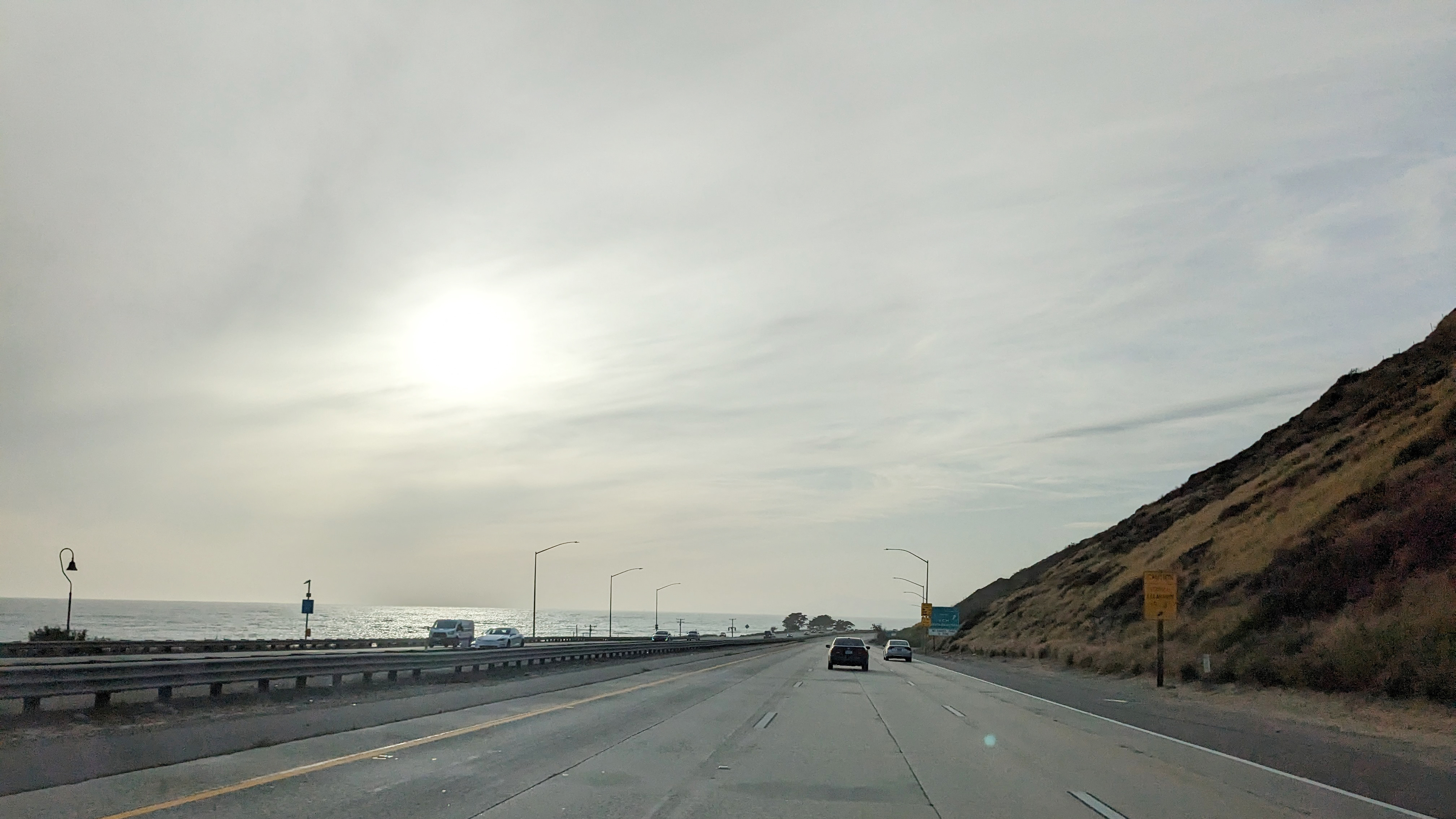
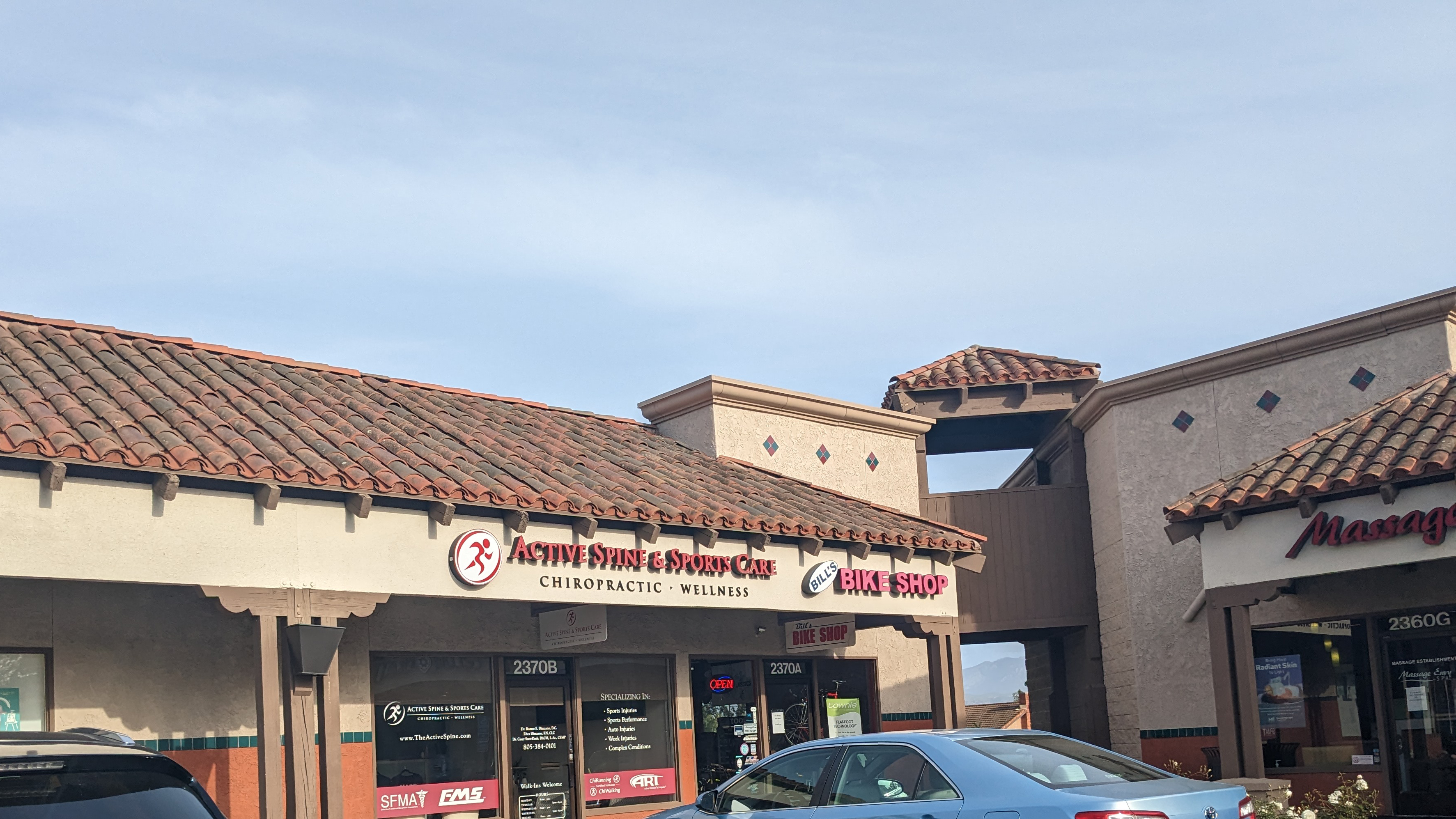
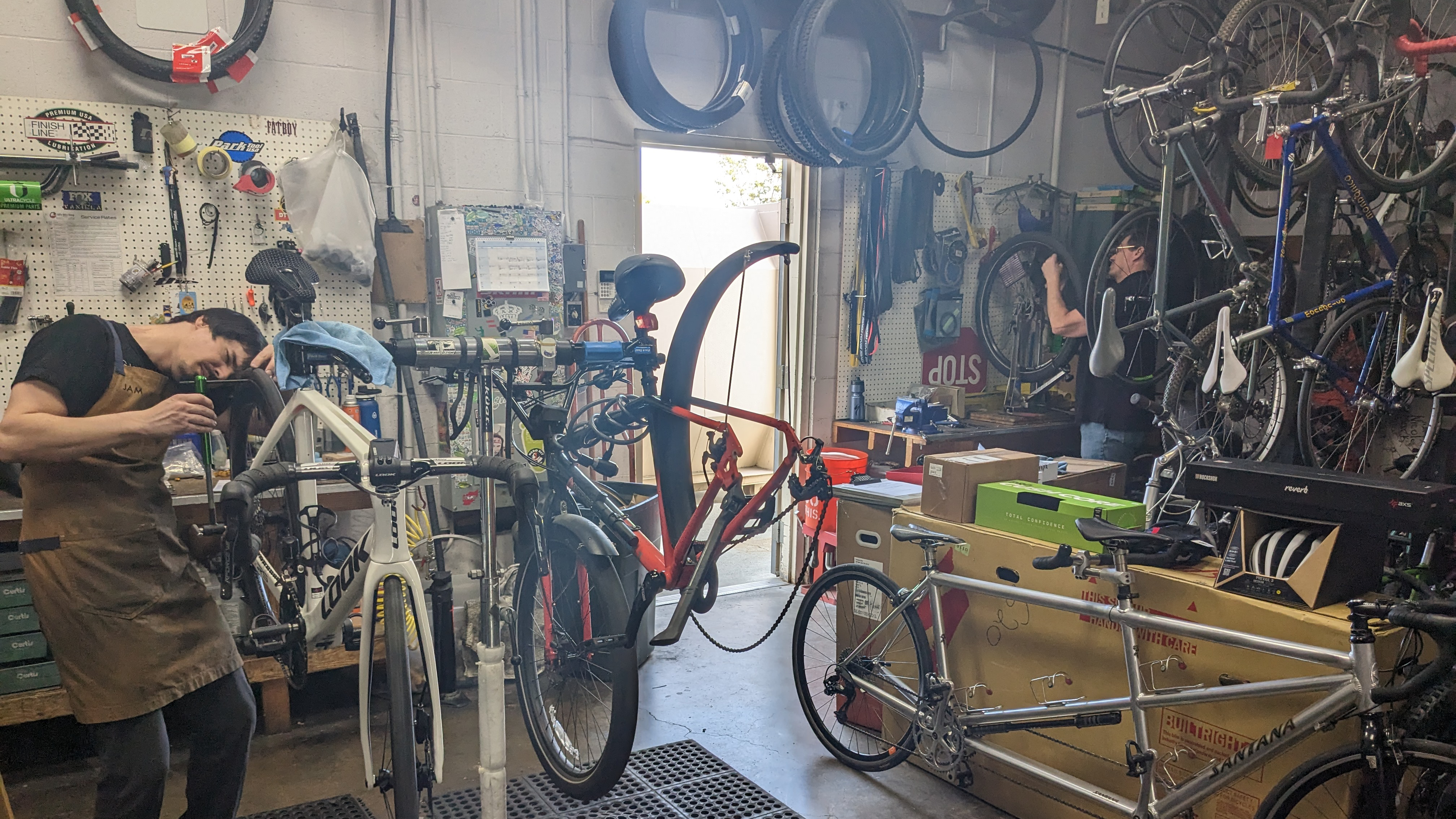
I pulled off and followed Google to the closest local shop, called Bill's Bikes, where I once again got a big hug from the bike community. When you walk into a small shop with an unreleased groupset on a high-end Look frame, there are some questions. I told my story again and the mechanic asked if it was Hernan who repaired the bike. It turns out they knew each other and we had an amazing conversation about how great Montenegro Manufacturing was before Joe offered to see if he could get the bike shifting better. As it turns out Joe, the mechanic at a small bike shop in a small city, was one of the best mechanics I've ever worked with. He noticed my derailleur hanger wasn't straight and pretty soon I was back on the road with a beautifully shifting bike.
When I got to Santa Maria, I dropped off the car and rode my bike back to the hotel and this is where the actual bike part of the adventure began. The hotel I chose was a Best Western Plus and, for anyone who would like to try travelling by bike while carrying nothing, I highly recommend this choice. They are independently owned but they are also required to have a certain level of breakfast. Most of the time part of that is an amazing waffle-making machine. At night you can order food into the room and in the morning you can pick up some waffles in your cycling kit. No real clothes are needed.
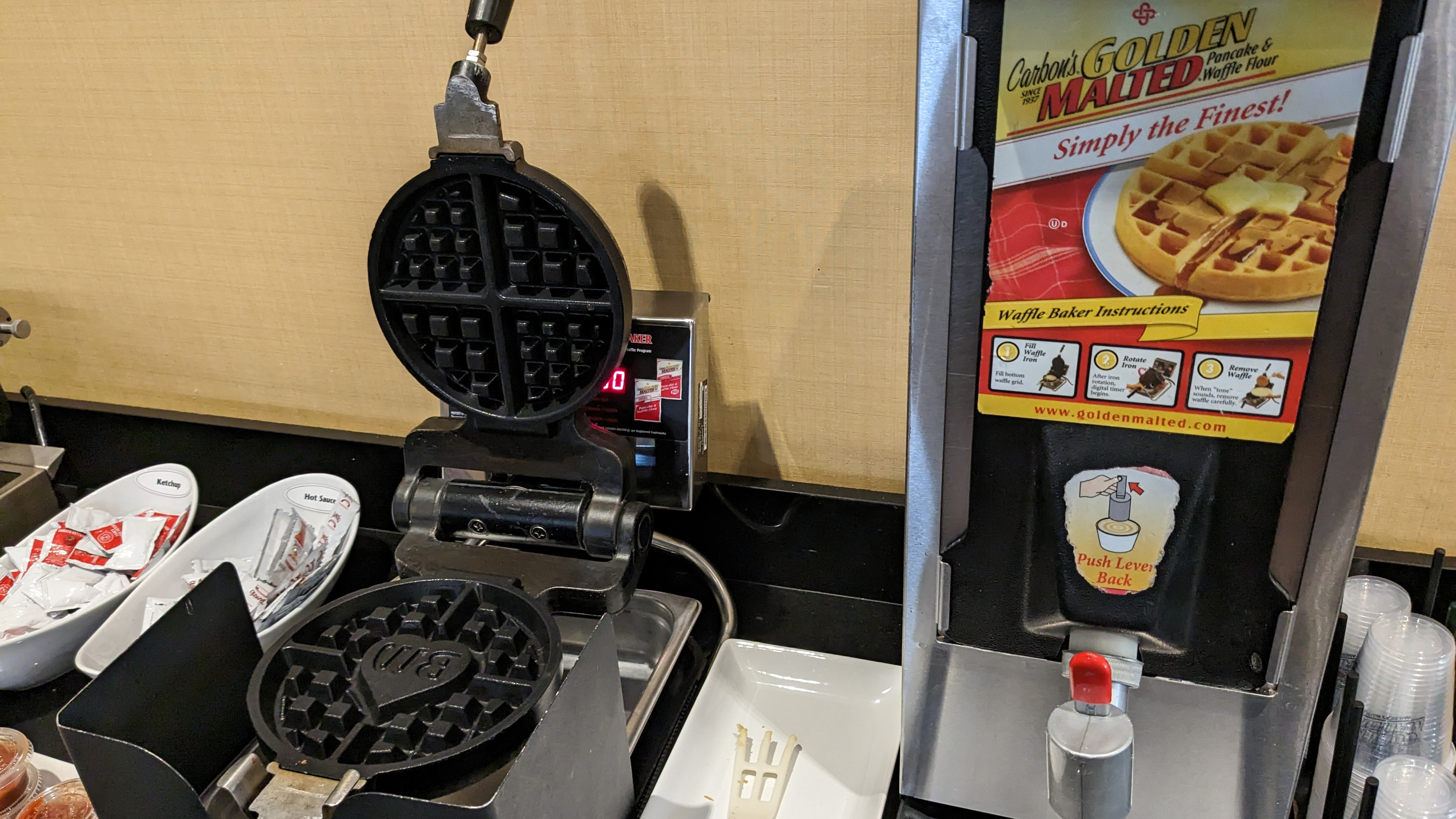
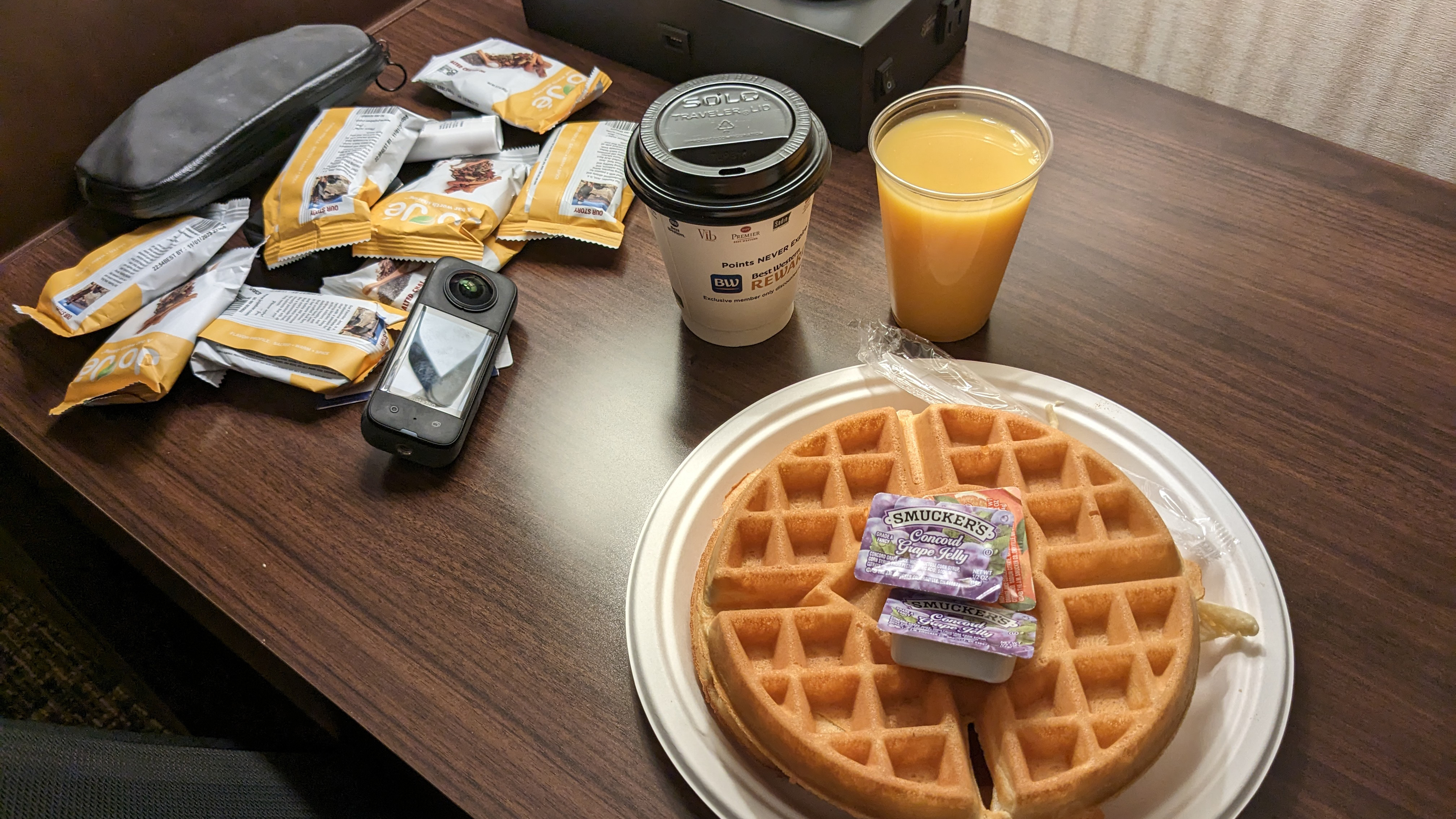
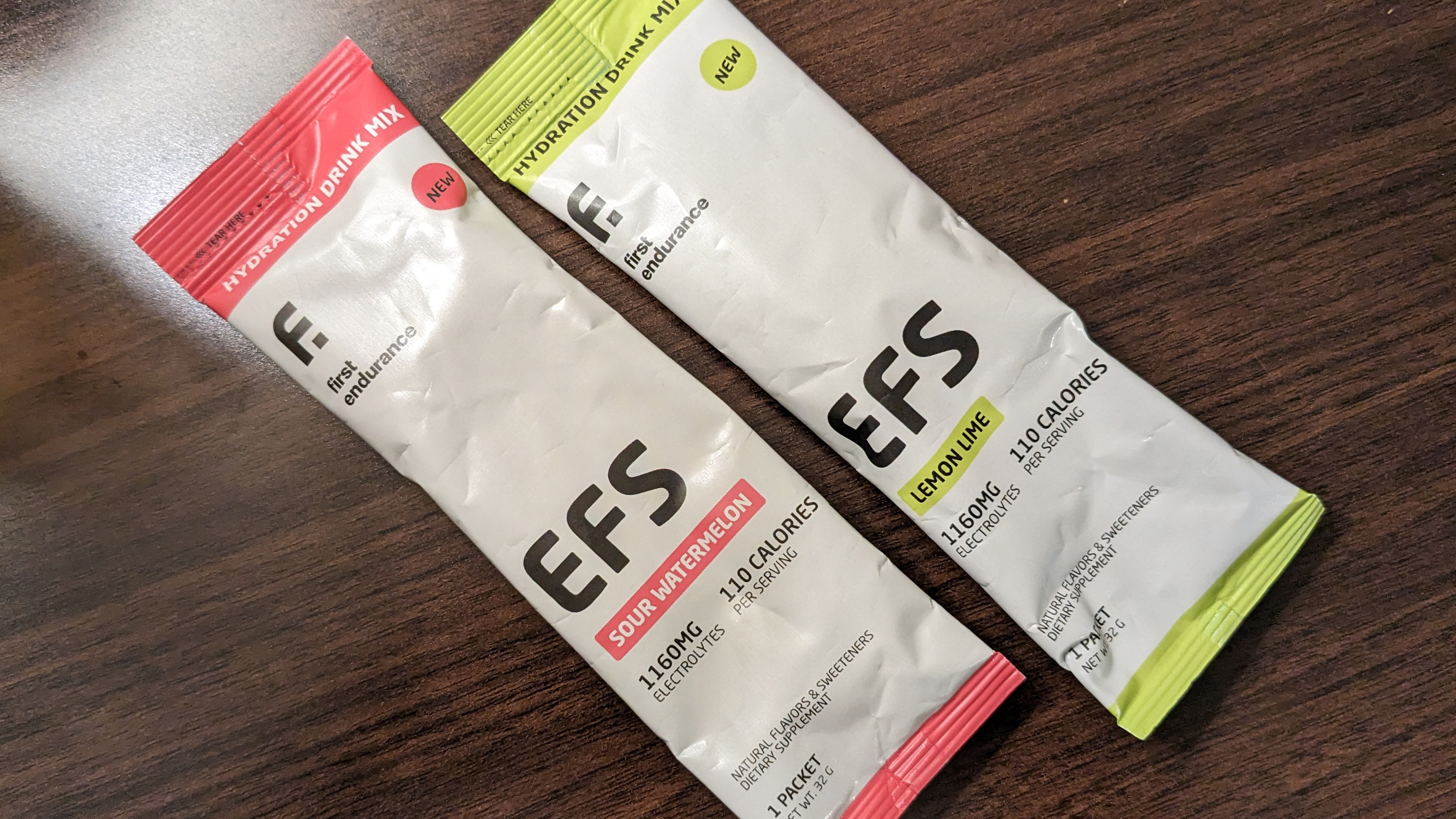
If you can’t follow the coast, you’ll need to climb
So far this story hasn't been on a bike. There's been a bike in a bag, a bike on an aeroplane, and a bike in a car but I was yet to actually ride the thing. The first time I rode in California was well after dark as I rode 5 miles (8km) from the rental car drop-off up to the hotel. Nervous was an understatement as this was not only the first ride in California but also the first ride on a repaired bike and the first ride after flying. I had 185 miles (298 km) to cover tomorrow and no real backup plan so I needed everything to feel just right. Thankfully, it did.
The next morning I woke up and had waffles with coffee before getting on the road an hour later than I promised myself I would. The weather was perfect and the sky a kind of early-in-the-year blue that California hasn't seen for a number of years. As much as most people might think of the California coastline, there's a rich interior to the state. I was far from the Sierra Nevada mountains and instead riding through rolling hills and agricultural land. For the first time in close to 20 years, this area isn't in drought and the hills are green. Late in the summer, the sky will take on a warmer, browner, colour and the hills will turn brown to match. For now, it's blue and green and gorgeous.
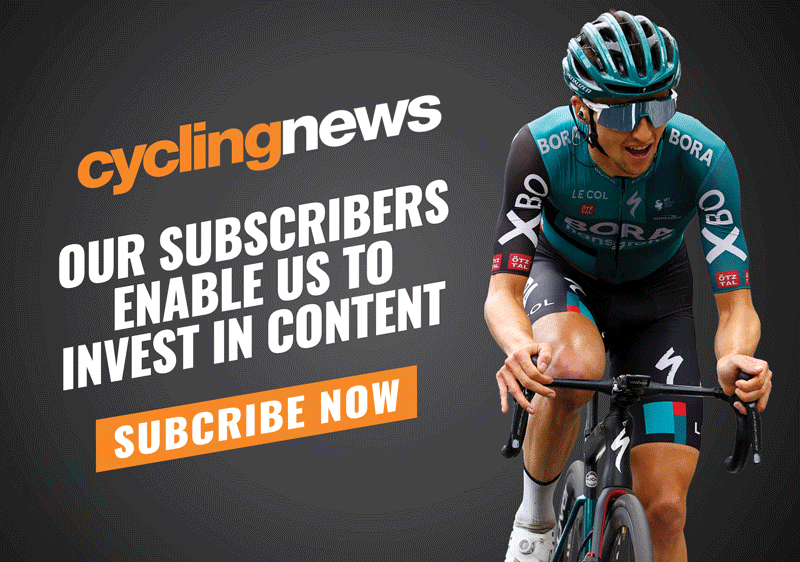
The morning went by in a blur of this landscape until I found myself at a park in San Luis Obispo refilling my bottles. When I’d asked someone about my route, the one piece of advice I’d been given was that between Santa Barbara and San Luis Obispo, the headwinds would be stiff. For better or worse though, I'd only had to ride part of that plus I'd done it in the morning when there’s less wind. Even though the headwinds weren't bad, they did indeed drop off entirely in San Luis Obispo. This was also where I headed inland due to the reroute. In fact, I took to the side of the highway and almost immediately had to start climbing.
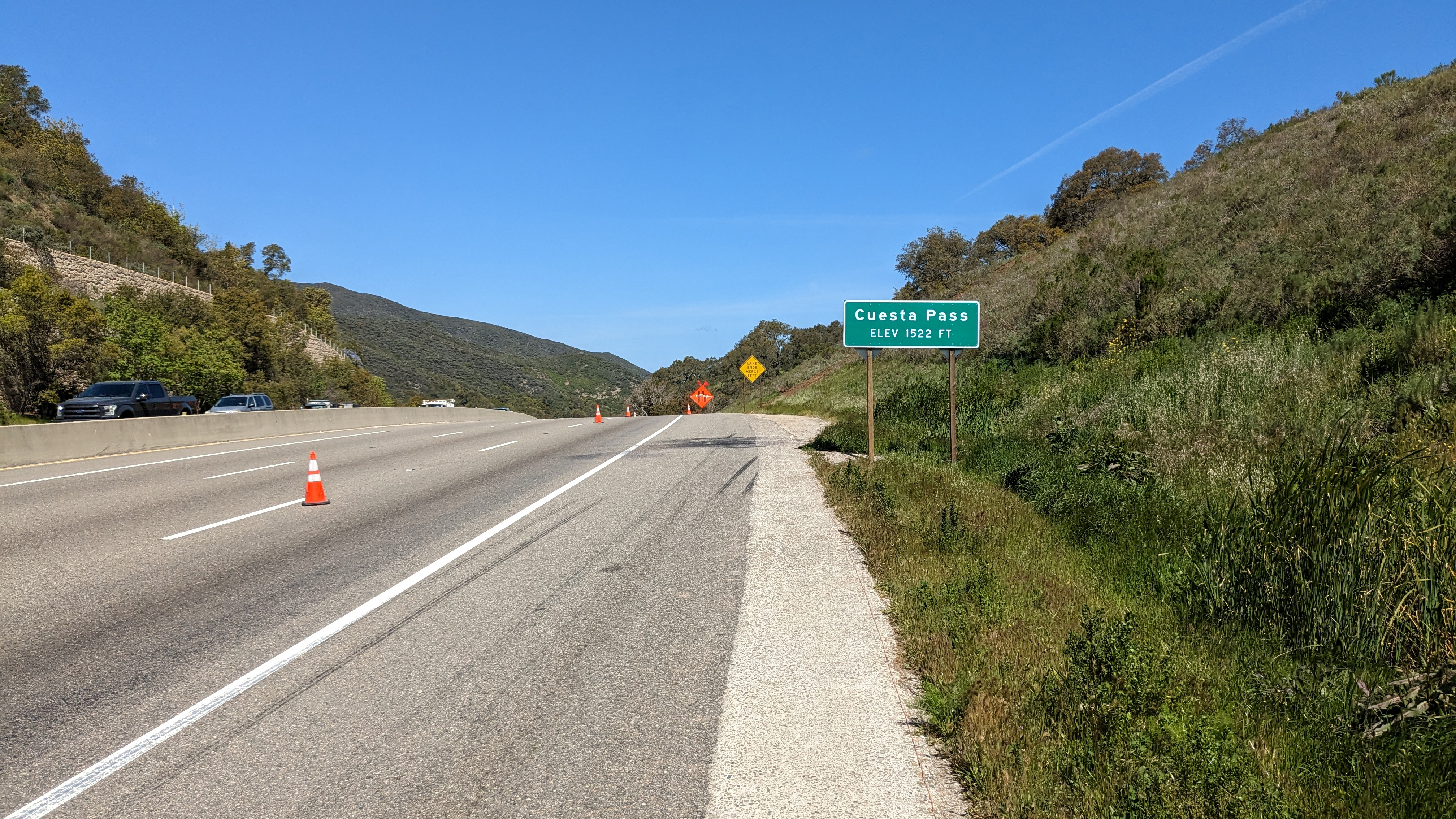
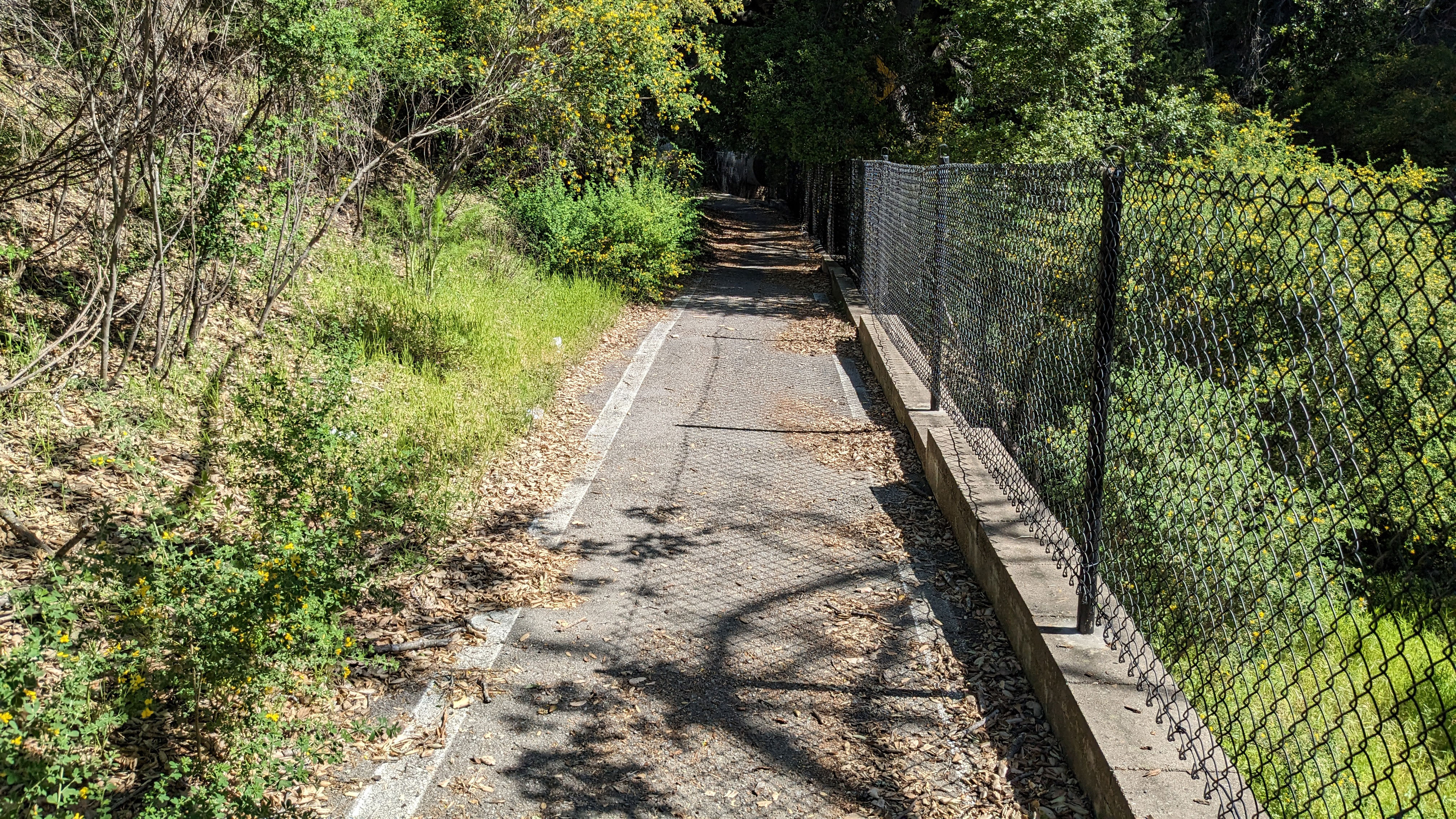
The hill out of San Luis Obispo was about five miles at an average 4% grade. There's also a max of 11% and that's all on the side of a highway. It was hot and it was difficult. At one point I did encounter a bike trail off the side of the highway but I opted to stick to my route instead of chancing extra miles on a route I didn't know. When I eventually headed back down the long descent, I encountered a drywall screw through my tyre. It put a nasty nick in the chainstay of the freshly repaired frame but I was able to quickly plug it with a Dynaplug and it turned out to be the only puncture I got on the whole trip.
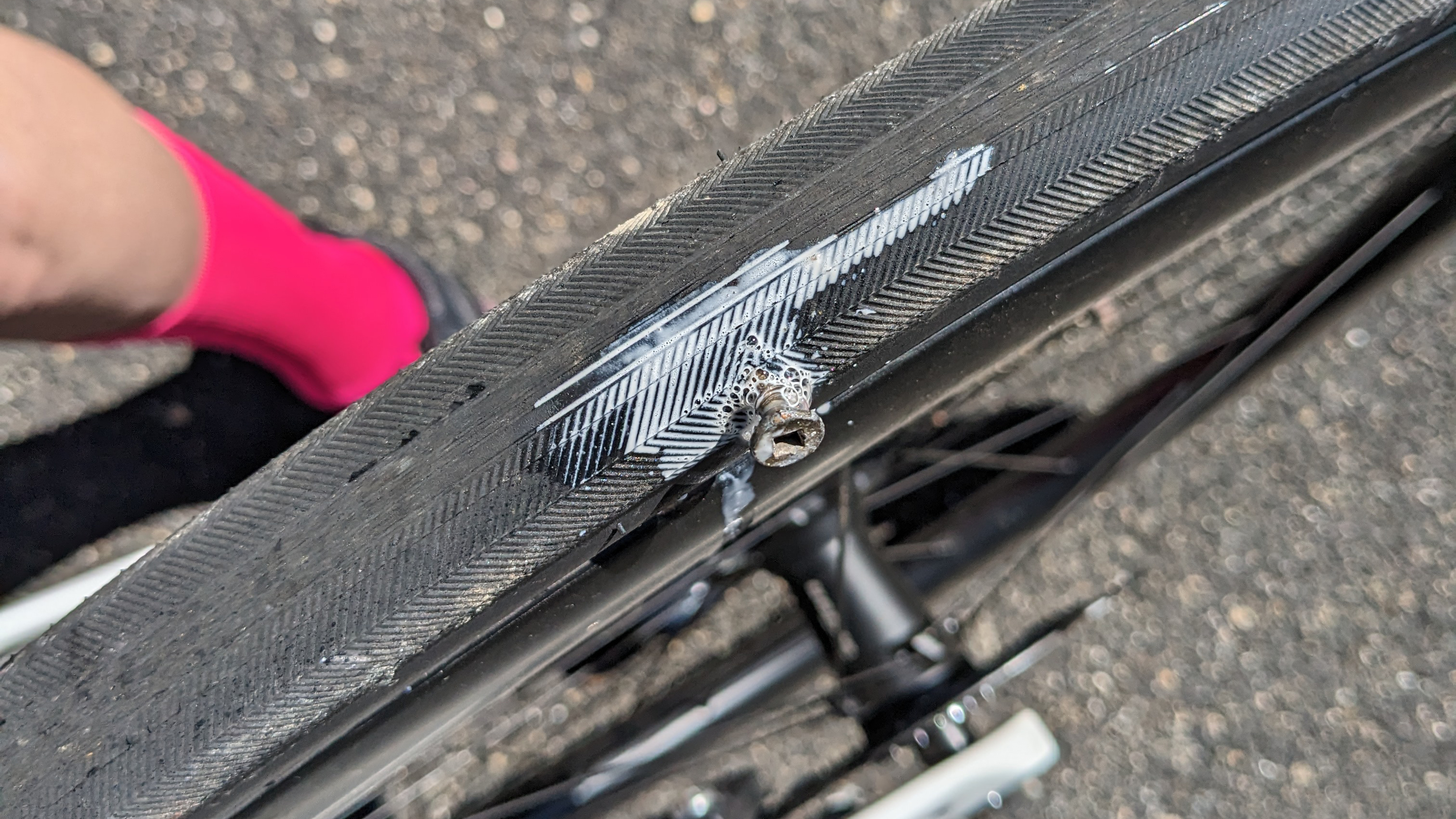
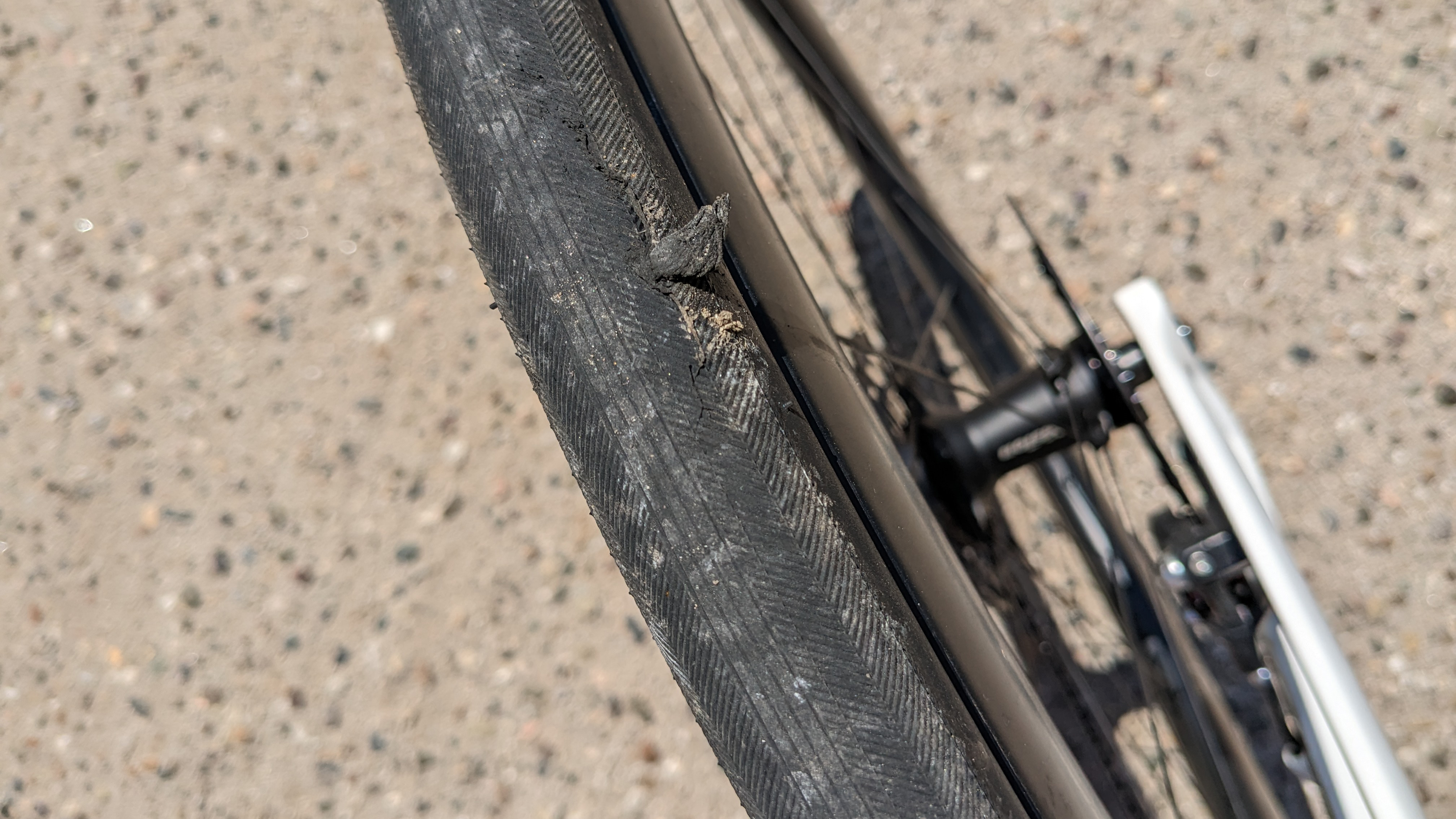
It turned out that my route stuck to the highway until I got to Paso Robles. I’ve since adjusted it in case anyone follows me but it worked as it was and it was efficient. However you decide to route, make sure you take a moment in Paso Robles. It’s a charming small town that feels stuck in another time and it’s also a last chance to find water, food, and bathrooms before heading to the hills. For the next 60 miles (100 km) there's not much of anything, so stock up. You’ll pass a couple of lakes and spend your time climbing and descending. For me, this was the best part of the ride. It felt like the riding I always do and there seemed to always be a new gorgeous view to take in. It wasn’t until near the end that I started to get a bit worried.
I had planned to refill water at a tiny little corner of nowhere called Lockwood. Instead, I found a sign saying that the store would be open in June. Not great but I didn't really start to worry until I noticed I was heading towards a military base. I've encountered military bases on other rides of this distance and when it happened before I wasn't able to get through. I started to panic and spent the next bit of time attempting to flag down every car that passed. Eventually, a soldier stopped and reassured me that I could get through. I just had to climb the ridge once more and from there it looked like an easy cruise into Monterey following along the mountains.
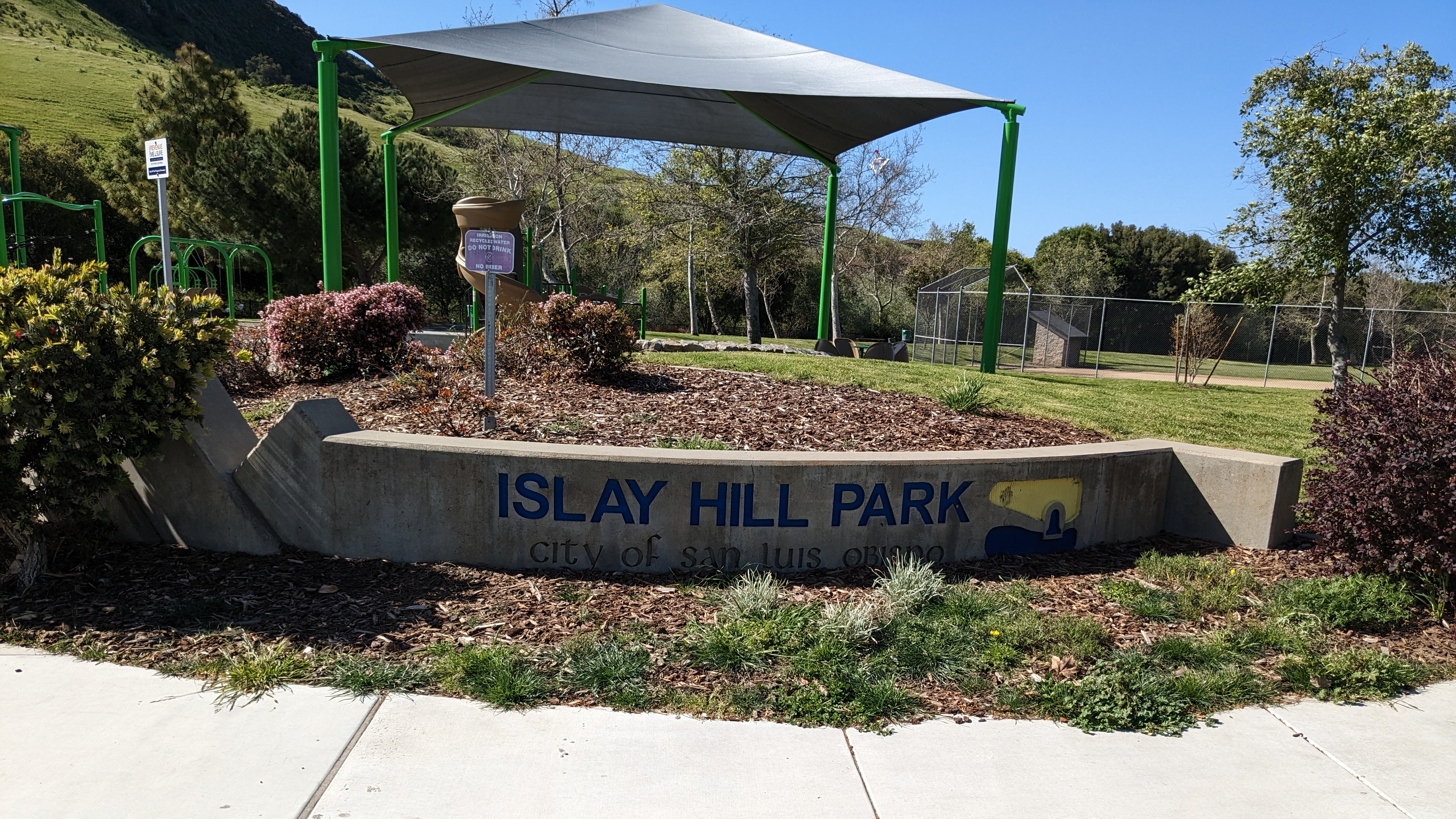
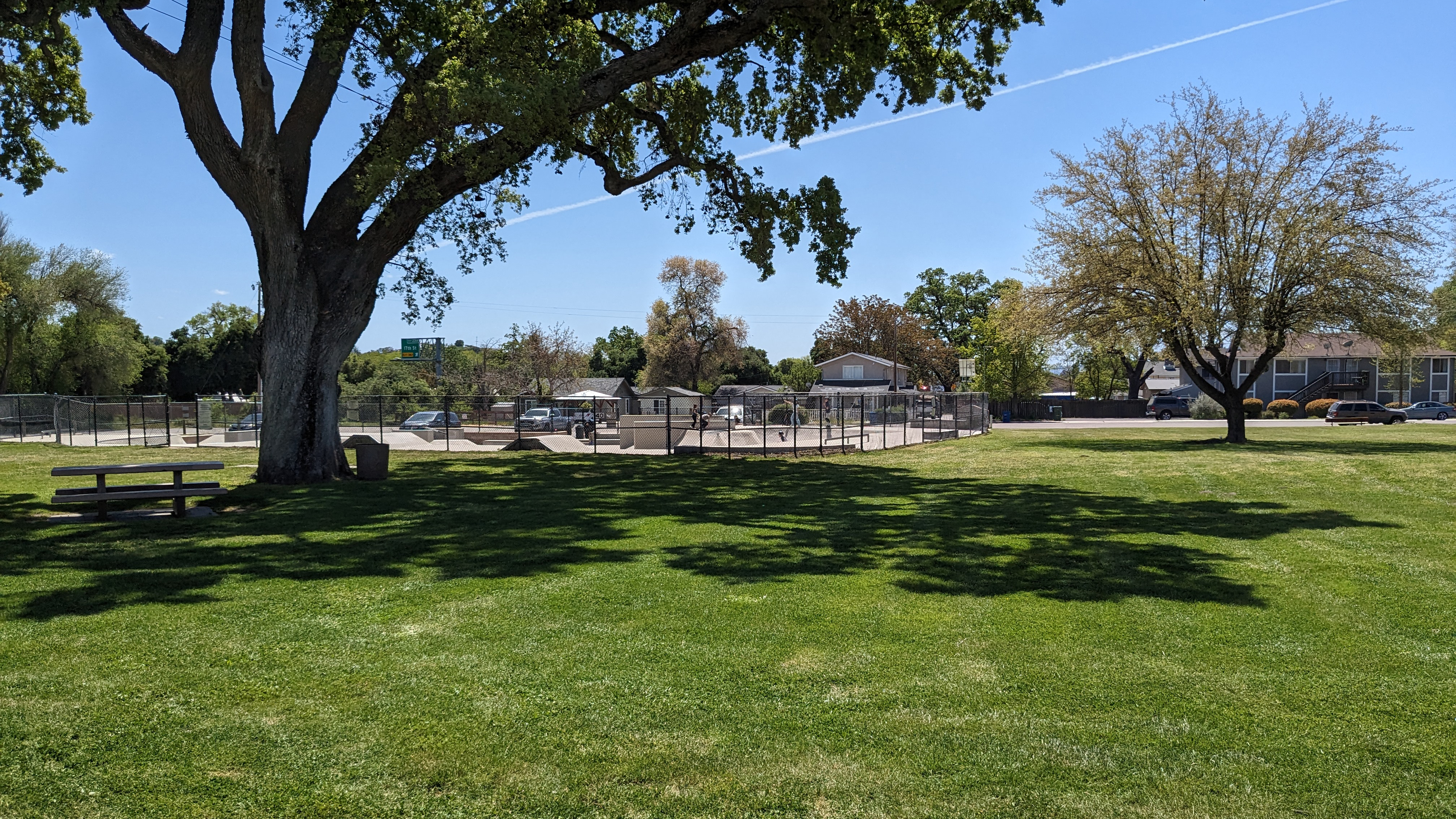
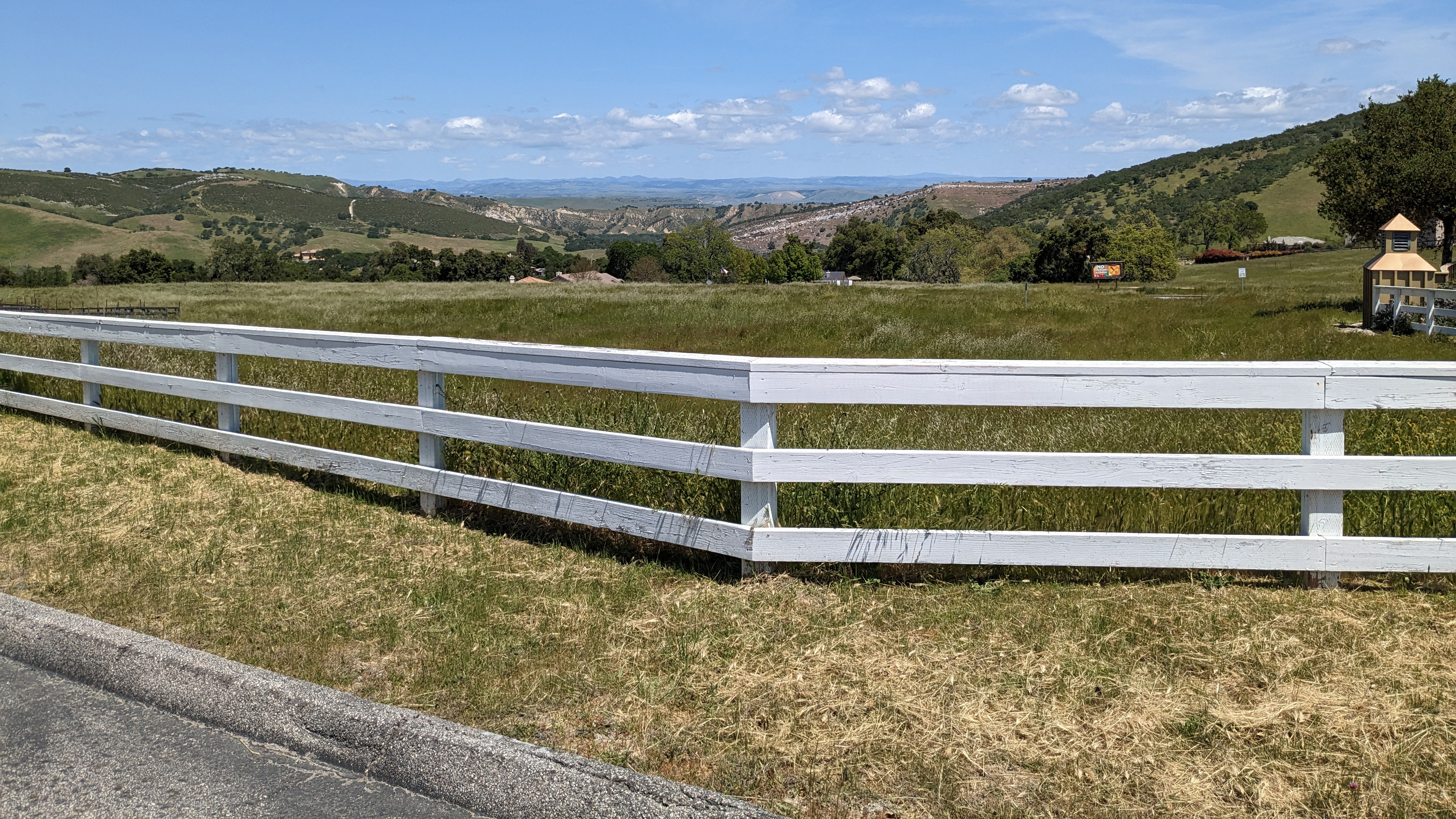
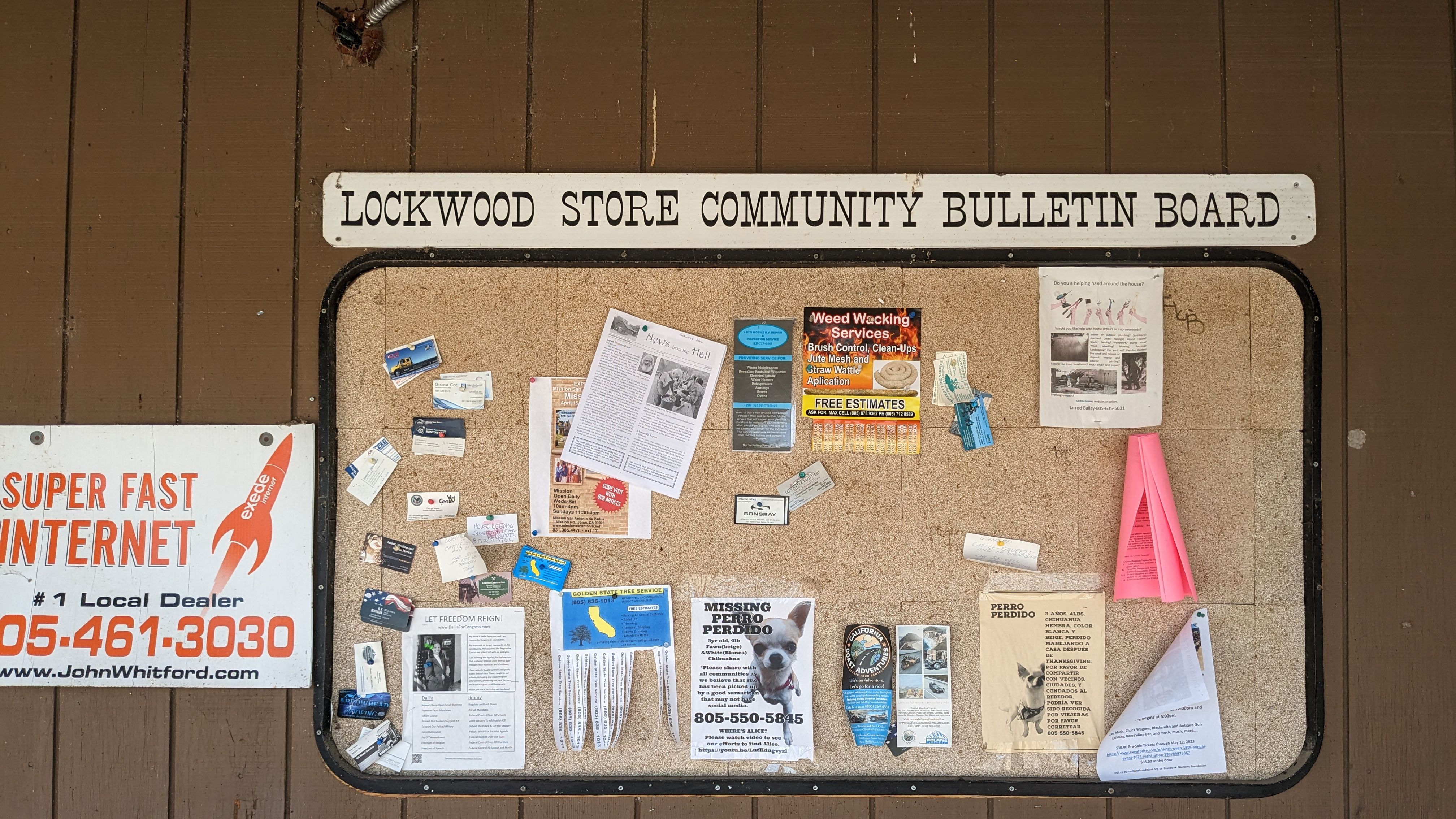
If you head north through California, the wind is serious
I was already in rough shape by the time I got out of the mountains. I recognized I needed food and water but it wasn't until roughly mile 120 (193 km) that I could find it. That's where the route came back to the highway and there was a gas station. I always think of Lael Wilcox chugging heavy cream and eating hot dogs at gas stations but, so far, I've always made a different choice. This time I went with Gatorade, Red Bull, almonds, and Fig Newtons. Some of it I used to fill bottles and put in jersey pockets while most of it I ate. Then I headed off.
What I thought would be a mellow final 60 miles was instead a brutal slog. The headwind was so strong that I was only managing 16km / 10 miles per hour and that was in a full aero position pushing as hard as possible. I was in the small ring on the flats barely moving and the sun was dropping quickly. All I could do was repeat the mantra, "just pedal." I have that tattoo on my thigh for a reason and this was the moment. The distance will fall away, just pedal.
Truthfully, the distance did just fall away. There isn't a lot to say about this part of the ride. At one point my route took me to a private farm road across a grape vineyard but I negotiated the gates and the gravel without much issue and I’ve updated the route to help others. The sun sank, and I switched on my Detour light but continued to press forward. Eventually, the wind died out and at some point I knew I had the ocean next to me. I just kept pedalling until I eventually made it into Monterey at 10:30pm.
In the end, the ride took me from 8:00 am to 10:30 pm with 12 hours and 10 minutes of moving time. I covered 291km / 181 miles and 2,648m / 8,688ft and there was very little drama during my time on the bike. There are some small route changes I've made for anyone who wants to follow but, aside from the panic about the military base, there was no issue there either. I've been through Big Sur, though not on a bike, and it's beautiful but so is central California. The only thing to keep in mind is that if you head from the South to the North, there are serious late afternoon winds.
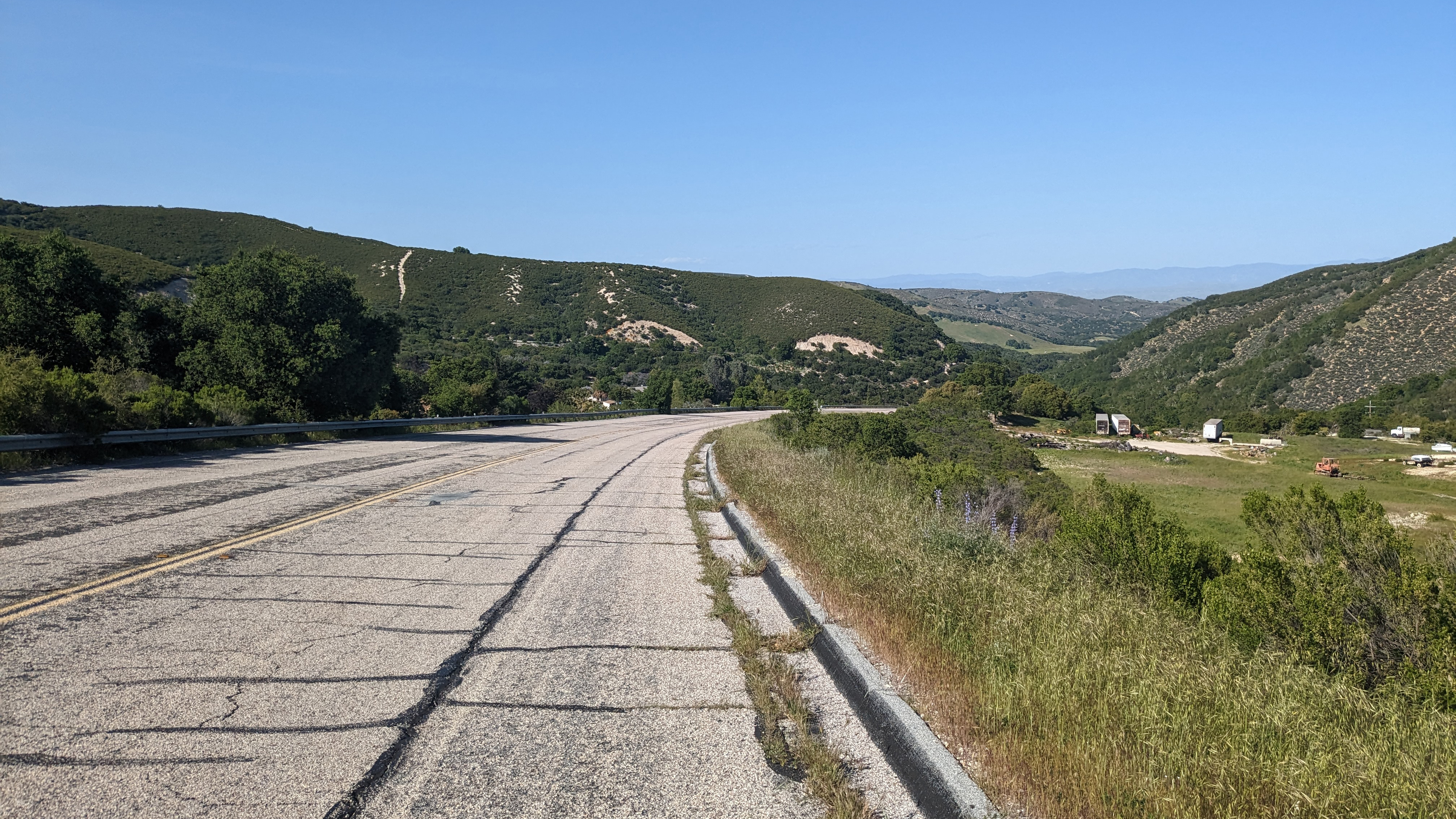
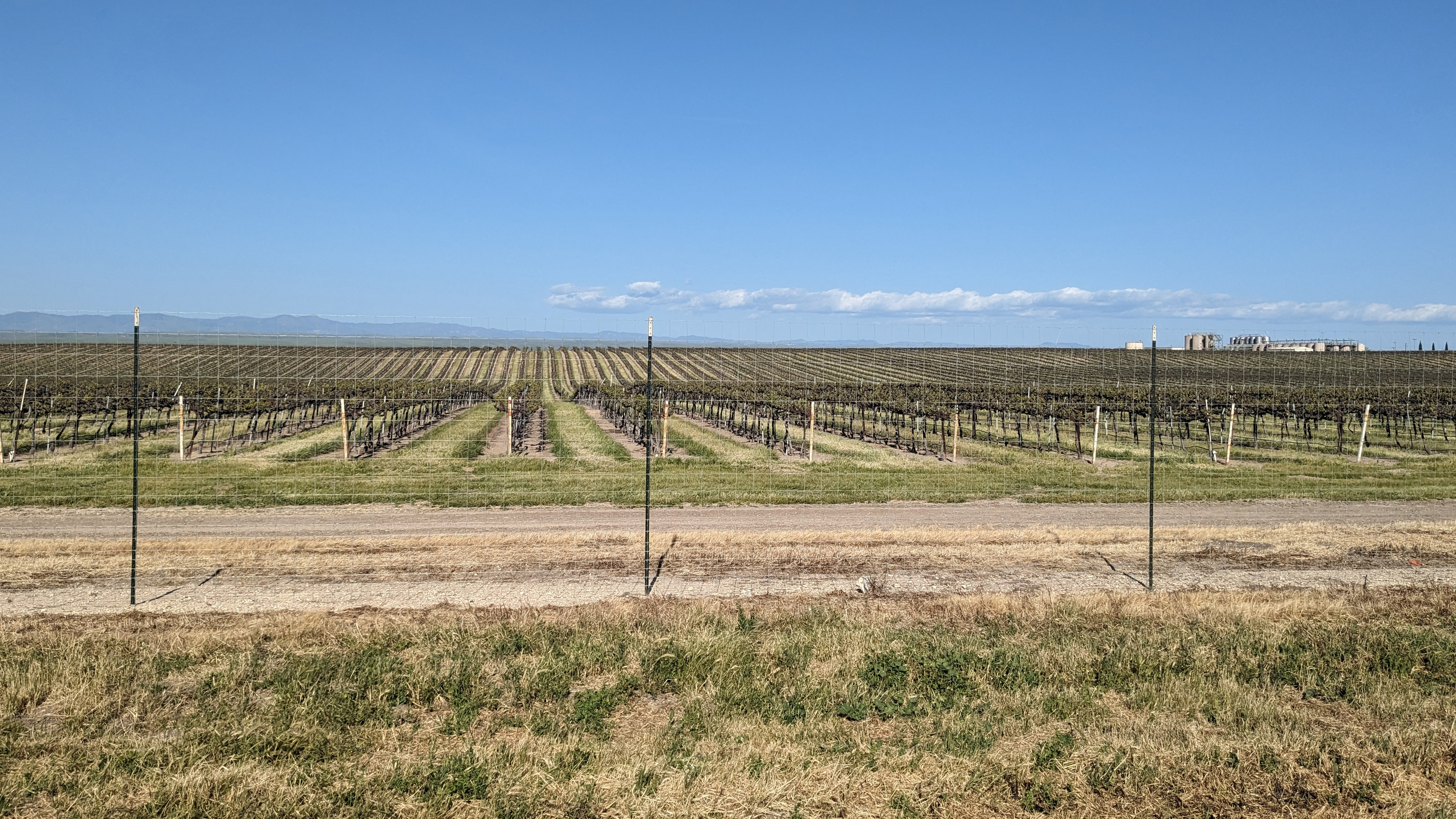
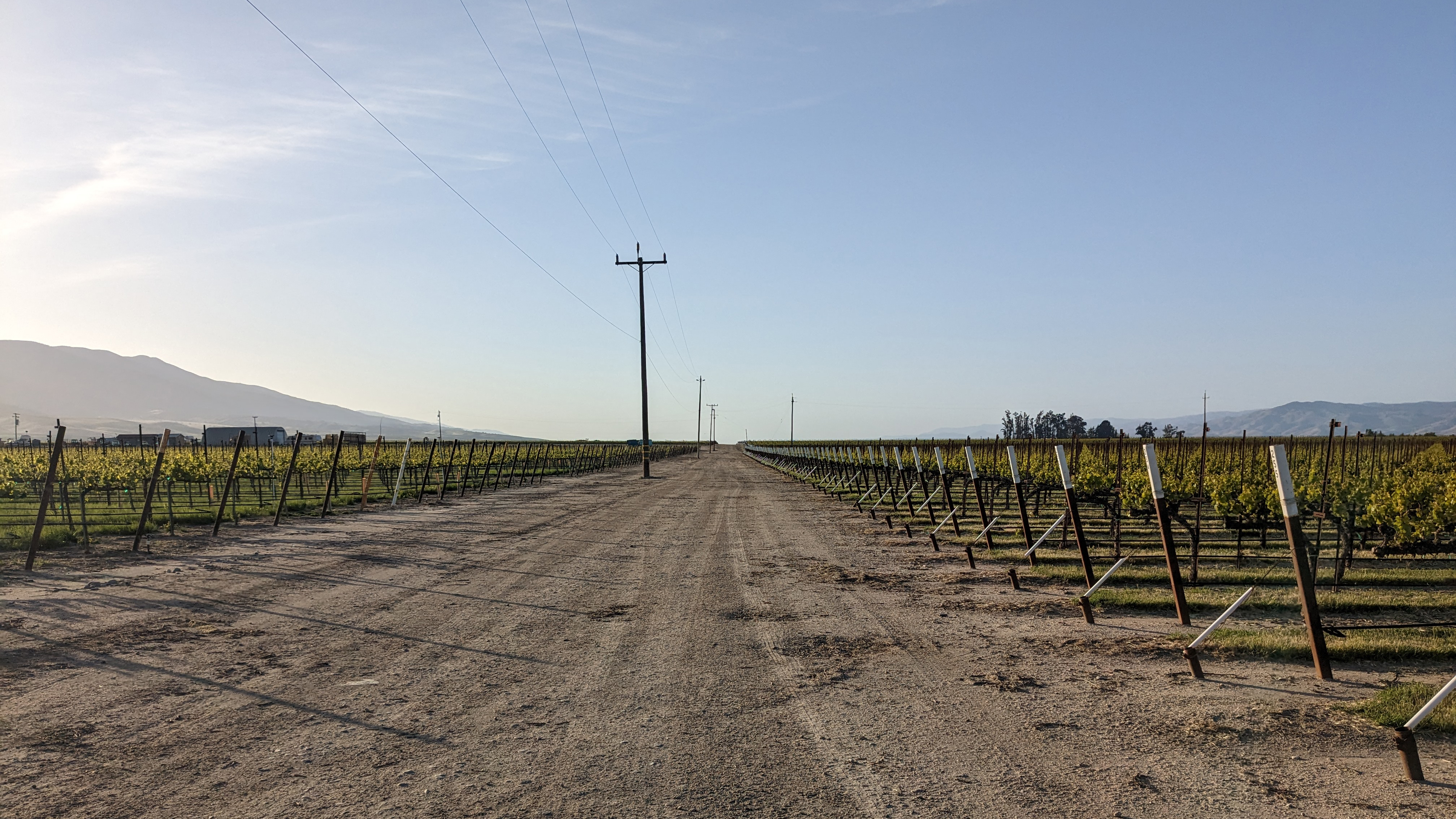
The gear I used
Although I only ended up actually covering 291km / 181 miles on my bike, the plan had been roughly double that and the gear would have been the same. I like to do these kinds of rides in the same way I do a Sunday ride most weeks of the year. That means minimal gear and I don't carry anything on my bike. My preferred tyre is the Cadex Race Tubeless in 28mm width and I tend to use Orange Seal inside of the tyres. I added a Dynaplug Covert kit to the handlebars for this ride plus I carry a Rapha bag in my jersey pocket with flat repair supplies including more Dynaplugs and a couple of Tubolito tubes.
I knew that there would be significant winds on the ride so I opted to be as aero as possible. That's not actually different from any other ride I do but I did think about a few small extra details. I chose Silca aero socks - as found in our guide to the best cycling socks - which turned out to be amazing. I paired those with POC Propel Aero Sunglasses and Trek Ballista MIPS aero helmet. The bike I used was the Look 795 Blade RS aero road bike and I paired the frame with Vision Metron 60 SL wheels.
Clothing was actually one of the things I tested the most as this came up. I wanted to look my best but also needed options that would be comfortable for two days of riding from sunrise to sunset. What I landed on was the MAAP Pro Bib 2.0, MAAP summer base layer, and Eliel Del Dios jersey. I also had a POC Supreme rain jacket and Gore C5 long finger gloves. For shoes I went with the Giro Empire SLX and the saddle I used was the Selle San Marco Shortfit 2.0 3D Racing saddle.
For electronics the only real change was I needed a rock-solid mount so I turned to K-Edge. I mounted an Outbound Lighting Detour light to the bottom of a K-Edge Max XL Combo out front adapter. Up top, I was using the Garmin 1040 Solar and I had a Garmin Varia RTL515, Garmin HRM-Pro Plus, and Garmin Rally RK200 power pedals connected to the head unit.
Because I was riding along highways and through towns in a populated part of California, food and drink wasn't too complicated. I carried most of what I needed in the form of First Endurance drink mixes and JoJe bars and while I did need water, the JoJe bars are dense enough that I actually had enough calories. I stopped for food to give myself something different rather than because I had to.
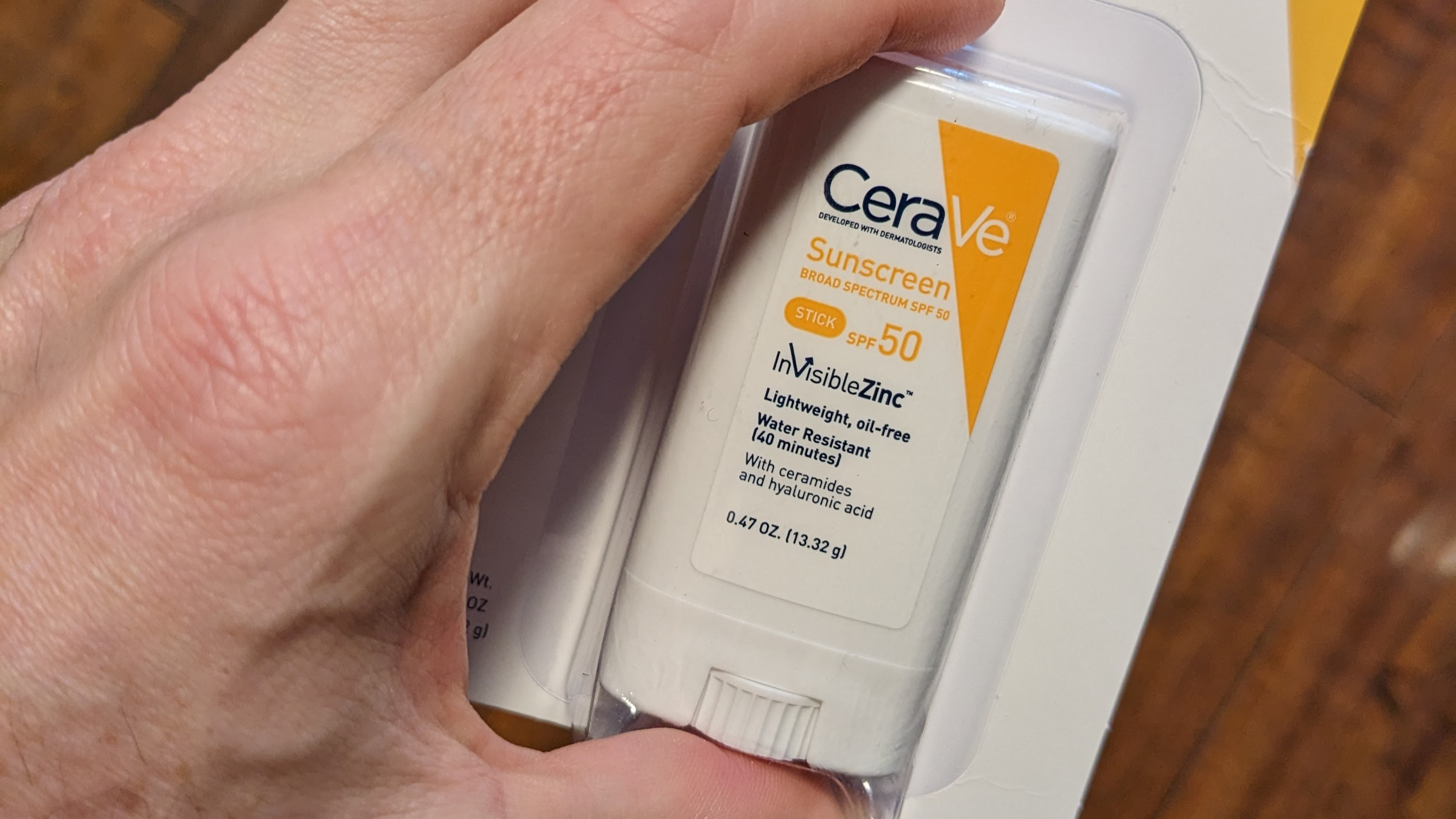
The mistakes I made
Thankfully, this section is pretty small. I've done this dance lots of times before so it's fairly practised and I have things dialled in. Still, I did make a few small mistakes. One thing that's new is that these days, hotels have USB ports. That means I no longer need to carry a charger and I could lighten my load just a little. Instead, though, I should have carried an extra battery for my phone. I spent the day worrying that my Google Pixel 6A would run out of battery power and I could have alleviated that with an inexpensive USB battery.
Aside from power, I also underestimated how cold coastal California would be after dark. The POC jacket and Gore gloves were barely enough and my toes were absolutely frozen. Depending on where, and when, my next big adventure happens, I'll need to consider nighttime temperatures.
The other thing I need to think about is the daytime sun. I carried sunscreen with me but I wasn't nearly diligent enough about using it. I always struggle with this early in the season, and thought I was being careful, but it has to be a serious priority. The back of my hands is a big one.

Anyone can do this
If you are thinking about an adventure, don't be afraid to give it a try. I used some fancy equipment, partly because I was testing things and partly because it's a joy to use, but you don't have to. I also flew somewhere this time but in the past, I've simply gone out my front door. Bring a credit card, some ID, and food. You can either loop your route, do an out and back, or have family or friends meet you somewhere. In the US, stretching your distance out will mean you end up on highways. It’s not ideal but it’s often not bad at all. There tends to be a large shoulder and no cross traffic. If you can find a better route take it but don’t totally rule something out because of highway miles.
Choosing to do big rides in a minimal way makes things a lot more accessible. All you need to do is keep pedalling. When things get hard, remember, "just pedal."
What’s in a Cyclingnews subscription? We use our subscription fees to be able to keep producing all our usual great content as well as more premium pieces like this one. Find out more here.

Josh hails from the Pacific Northwest of the United States but would prefer riding through the desert than the rain. He will happily talk for hours about the minutiae of cycling tech but also has an understanding that most people just want things to work. He is a road cyclist at heart and doesn't care much if those roads are paved, dirt, or digital. Although he rarely races, if you ask him to ride from sunrise to sunset the answer will be yes.
Height: 5'9"
Weight: 140 lb.
Rides: Salsa Warbird, Cannondale CAAD9, Enve Melee, Look 795 Blade RS, Priority Continuum Onyx


